
OCTOBER 2022 Off-sale date: OCTOBER 31, 2022 £3.50
The State Gun Carriage carrying the coffin of Her Majesty Queen Elizabeth II is hauled by
142
sailors
through
London as part
of funeral
events for
Her
Majesty See pages
2-7.
Picture by: Sergeant Robert Weideman
PRIDE.
Respect. Sadness. Duty. Gratitude.
It is almost impossible to encapsulate the mood, the tide of emotions, the outpouring of (inter)national affection and admiration which swept through our land – and beyond – over ten days last month.
And it is similarly hard to sum up the feelings of the Royal Navy, inextricably bound with Princess, then Queen, Elizabeth from her earliest days to her very last.
It is a golden thread running through the lives and histories of both: Her Majesty’s Ships. The Band of Her Majesty’s Royal Marines. The portraits in every wardroom, in the cabin of every Commanding Officer.
She launched and sponsored more than half a dozen warships, each one representing a leap foward in technology and naval thinking, from the nation’s last battleship to its first nuclear-powered submarine.
Two were still in service at the end: frigate HMS Lancaster and flagship HMS Queen Elizabeth, the final vessel she named, the final vessel she visited.
Both were on active service when the news of their sponsor’s passing came through: Lancaster in Portugal, the carrier mid-Atlantic.
They held services of thanksgiving on their flight
deck and fired 96-gun salutes – one round for each year of the Queen’s life.


Their response was echoed around the globe by Royal Navy warships on patrol, while gun salutes reverberated around the Hamoaze and Portsmouth Harbour.
Twenty-four hours later the guns sounded again, this time to mark the accession watched live, thanks to the white heat of technology the Queen could only have dreamed of when she ascended to the throne in 1952.
Such was the span of the New Elizabethan Age. The Royal Navy mirrored the changes her reign spanned –cultural, social, technological.
The Fleet mustered for the Queen’s Coronation Review was crewed exclusively by men, WW2 veterans, National Servicemen, post-war volunteers.
The ships were led by battleship Vanguard, already an anachronism in the age of the aircraft carrier. Countless other vessels were veterans of WW2. This was the dawn of the jet age. Helicopters were a new addition to the Fleet Air Arm.
As the curtain was lowered on the New Elizabethan Age, the Navy was much smaller. The battleship had passed into history. The aircraft carrier remained Queen of the Seas, its jets now faster than the speed of sound
and potentially invisible to the prying eyes of hostile radar. Britain had only just harnessed the power of the atom in 1953. Today it drives every one of the Royal Navy’s submarines as they perform a mission which was probably on the fringes of imagination seven decades ago.
The Fleet today reflects a different Britain. Women serve side-by-side with men, ship’s company reflect the rich tapestry of a nation which embraced many cultures and creeds, as well as the Commonwealth.
The Queen has been one constant over those seven decades. Her values are our values. Duty. Nation. Honour. An enduring force for good.
As it did in 1952, so in 2022: the Royal Navy looks to the world as its domain, from Pole to Pole, the Atlantic to the Pacific and many seas and oceans in between.
For all these changes – and many more – there was much in the last act of Elizabeth II’s life which had changed little, if at all since sailors first picked up the drag ropes on a bitter February day in 1901 and hauled the coffin of Queen Victoria through Windsor... much to the chagrin of the Army, whose horses had been assigned the privilege until they reared up in the cold.
The State Funeral on Monday September 19 was the result of years of planning and several days of intense
activity as Operation Bridge was activated.
It was a huge logistical, organisational challenge, delivered at short notice by hundreds of people –serving personnel, reservists, civil servants – including a dedicated ‘ops room’ in Portsmouth, which ran around the clock from the moment news first broke of the Queen’s death until personnel returned to their units.
Within hours, the first sailors began converging from all over the country – all three naval bases, plus HMS Raleigh, the Submarine Service, frigate Iron Duke and 3 Commando Brigade – on HMS Sultan, Excellent and Collingwood to begin being drilled by 30 of the Royal Navy’s experts in ceremonial duties.
Around 1,000 personnel were required either to line the processional routes – the short distance from the Palace of Westminster to Westminster Abbey for the funeral service, then from the abbey to Wellington Arch – a 90-minute march of poignant pageantry no-one who witnessed or experienced it will ever forget.
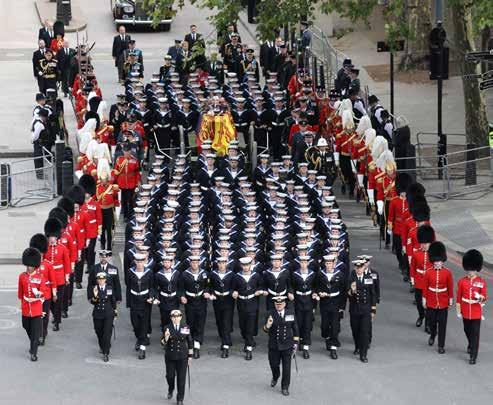
Of the 140 sailors accompanying the coffin – Officer
Commanding Captain Catherine Jordan, her deputy Commander Steve Elliott, the 98-strong Sovereign Guard pulling the two-and-a-half ton gun carriage and 40 sailors acting as human brakes – one was
THE SENIOR SERVICE WAS WITH HER MAJESTY FROM HER EARLIEST DAYS TO HER VERY LAST
HOW THE ROYAL NAVY SAID FAREWELL... Around a thousand sailors were part of funeral events in London, with 142 of them hauling the State Ceremonial Carriadge carrying Her Majesty the Queen’s coffin along the procession route – a 90-minute march of poignant pageantry no-one who witnessed or experienced will ever forget
descended from someone who’d performed the same duty 70 years earlier.
In 1952, Arthur Turner pulled the carriage carrying the coffin of George VI.
In 2022, his grandson Weapons Engineer Joe McGonagle-Turner, from the Engineering Training Squadron at HMS Drake in Plymouth, served in the brake party.

“My dad said to me: ‘You’ll be marching in the footsteps of your grandfather’ and that really hit me. I would like to think that my grandfather was looking down watching, and feeling as proud as me and my family,” said the 22-year-old from Stratford-uponAvon who joined the Royal Navy 18 months ago.
“Just to be chosen for these duties is a great honour. The Queen was an amazing monarch, she did so much for our country, so it means so much for me to be able to be there on her final day.”
For the Kerr family there was a symmetery to the unique occasion. Scots Guard John Kerr was a street liner on The Mall in 1953 at the Queen’s Coronation. Seven decades later, his grandson Murray was selected as a streetliner for the last act in Her Majesty’s unprecedented life and reign.
The 92-year-old offered the young sailor some sage
advice ahead of the funeral.
“My grandad has always spoken with pride about his time in the Guards, but the one thing, whenever I mention anything ceremonial, was about being at the Queen’s coronation. That was a defining part of his life, not just his career,” said the 20-year-old seaman specialist from Ayr.
In front of the carriage, Commander Steve Elliott was performing his final duty in uniform after 32 years’ service.
He described the mood among all those participating as “stoic and strong”.
“I think it will be a ‘sad highlight’ for all of our careers – 17- and 18-year-olds just beginning their careers to people like me coming to the end of many years’ service,” he said.
“It is something you will tell your grandchildren about, a piece of history, and something to be proud of.”
The gun carriage he accompanied – last used for the funeral of Lord Mountbatten in 1979 – is kept in environmentally-controlled conditions at HMS Excellent on Whale Island in Portsmouth, where it is lovingly cared for under the direction of Lieutenant Commander Paul ‘Ronnie’ Barker.
He checked the state of the carriage every couple of days, maintaining it for use at 24 hours’ notice.
“Lots of love and care go into the carriage –looking after it is a great honour, as is preparing it for the funeral. It’s a fabulous piece of the Navy’s – and country’s – history,” he said.

“This was a one-off occasion, something none of us will experience again and it was a great privilege to be involved.”
On the day the carriage – and those hauling it –looked magnificent, the Queen’s oak coffin seemingly riding a tide of white crests as the ratings’ caps rose and fell with each step the men and women of the Sovereign’s Guard took to the mournful pipe and drum of a massed Army band.
After passing along London’s most famous thoroughfares – Whitehall, The Mall – and past landmarks known the world over – Horse Guards, Buckingham Palace, the procession delivered Her Majesty’s coffin flawlessly to Wellington Arch.
From there the coffin was conveyed by hearse to Windsor for its final journey to St George’s Chapel in Windsor Castle.
Another 1,000 military personnel were involved in this last act of Her Majesty’s long, eventful reign,

with sailors and Royal Marines again lining the route – including the iconic Long Walk.

Marching solemnly behind the gun carriage detachment in step with her three brothers was HRH the Princess Royal who, three days, later visited Portsmouth Naval Base to thank all those involved in the funeral for so resolutely and impeccably performing their duties.
“It was a lovely personal touch that she came down in person to thank personnel involved,” said Leading Engineering Technician Benjamin Tetley, one of the gun carriage team.
“I was really honoured to be involved in carrying the gun carriage, I don’t think there’s a more personal part to have played. Everyone had a sense of purpose and put all their effort in.
“The Royal Navy is steeped in tradition and we helped upkeep that. To be part of that history and tradition is truly an honour.”
He – and many more – helped write the golden page in the last chapter of the New Elizabethan Age. The hour has now come to pen the opening of the New Carolean Age.
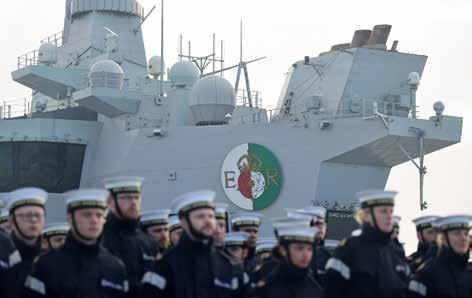 CLOCKWISE FROM TOP: Flagship HMS Queen Elizabeth fires the Death Gun Salute during her crossing of the Atlantic; HMS Northumberland fires off her own gun salute; The Queen’s Frigate, HMS Lancaster, marks the death of Her Majesty; Sailors in HMS Queen Elizabeth during a moment of reflection; a sailor from HMS Albion takes a moment during the amphibious flagship’s gun salute
CLOCKWISE FROM TOP: Flagship HMS Queen Elizabeth fires the Death Gun Salute during her crossing of the Atlantic; HMS Northumberland fires off her own gun salute; The Queen’s Frigate, HMS Lancaster, marks the death of Her Majesty; Sailors in HMS Queen Elizabeth during a moment of reflection; a sailor from HMS Albion takes a moment during the amphibious flagship’s gun salute
HER MAJESTY AND THE SENIOR SERVICE
A LOOK BACK AT THE QUEEN’S ENDURING BOND WITH THE ROYAL NAVY THROUGHOUT HER LIFE

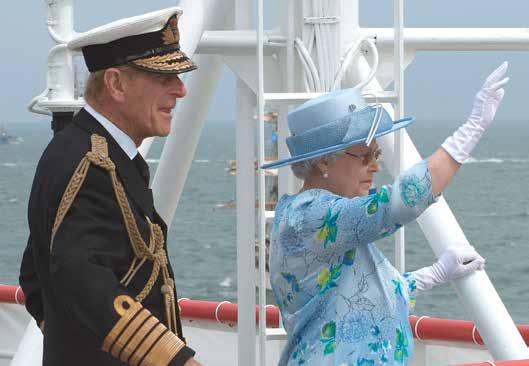
ON a grey, wet, windy December day in 2017, wrapped in a thick purple coat, Queen Elizabeth II stood in the hangar of Britain’s newest, largest warship.
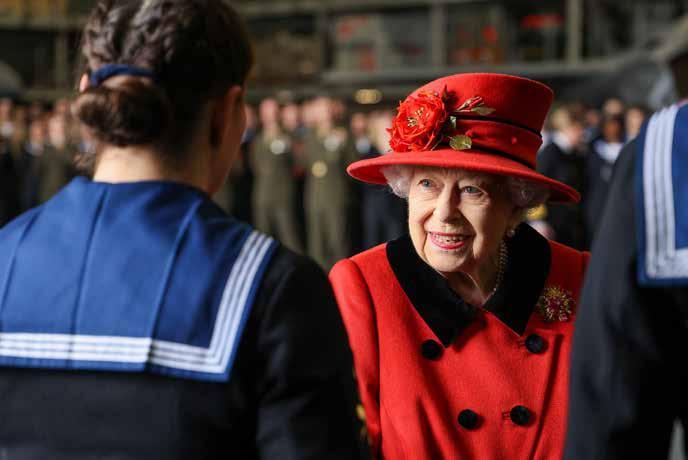
Before her around 3,000 people – not just ship’s company, but ambassadors, shipwrights, military leaders, families, musicians, politicians, and global media.
“As the daughter, wife and mother of naval officers, I recognise the unique demands our nation asks of you and I will always value my special link with HMS Queen Elizabeth, her ship’s company and their families,” she told those present at the carrier’s commissioning ceremony.
Her words underlined the importance of the Royal Navy to her – a golden thread running through a long, eventful life and reign and a century unparalleled in the history of the Royal Navy and Nation.
For as she declared at the naming of the same aircraft carrier in 2014: “Lord Mountbatten told my father on becoming King there is no more fitting preparation to be King than to have been trained in the Royal Navy.
“My own personal associations, especially as the proud sponsor of six
other warships and submarines, remind me that reputation for excellence continues to this day.”
Her Majesty’s first encounters with the Royal Navy were familial. She was born into a naval family, her father, then Duke of York, served before and during the Great War, including at the Battle of Jutland in the battleship HMS Collingwood.
In the year after the Princess Elizabeth’s birth, the Duke and Duchess of York made an official visit to Australia embarked in HMS Renown.
She joined her parents aboard the old Royal Yacht Victoria and Albert at the Coronation Fleet review in 1937 – the first of many such gatherings of naval might she would attend over 75 years.
Two years later she was famously hosted by a young Prince Philip Mountbatten while the King and Queen visited Britannia Royal Naval College. They corresponded throughout the war and married in November 1947.
For a brief period, she was both Royal Princess and naval wife, living, when possible, in Malta while Prince Philip was serving with the Mediterranean Fleet as First Lieutenant of the destroyer HMS Chequers and
then in command of the frigate HMS Magpie.
In time, the future King Charles III would follow in his father’s footsteps (1971-76), training as a naval helicopter pilot and later taking command of the minesweeper HMS Bronington, followed by his younger brother. Prince Andrew served in the Falklands as a helicopter pilot in 820 Squadron, flying Sea Kings from HMS Invincible, and later commanding the minehunter HMS Cottesmore.
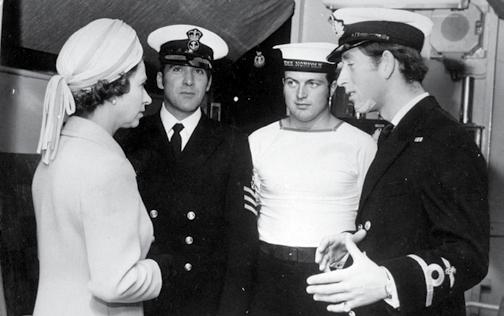
Princess Anne, The Princess Royal, has been Chief Commandant for women in the RN since 1974, while Prince Edward, Earl of Wessex, has been Commodore-in-Chief of the Royal Fleet Auxiliary since 2006.

Few people have launched more ships than The Queen – more than half a dozen warships and submarines alone, beginning aged just 18 with the mighty battleship (Britain’s last) HMS Vanguard.
The teenage princess was not fazed by the magnitude of either the ship or occasion. Vanguard, she declared, was a "truly magnificent addition to the Royal Navy", the embodiment of three years' work by the shipwrights and engineers of the Clyde. "They must surely have put something into her which is part of the staunchness of our race."
The Queen and the Duke of Edinburgh embarked in HMS Endurance to review the Fleet assembled at Spithead for the Trafalgar 200 International Fleet Review
The presentation of the Queen’s Colour to the Submarine Command by HM The Queen at HMS Dolphin. Picture: National Museum of the Royal Navy
The Prince of Wales acts as guide for his mother, Queen Elizabeth II, during her visit to HMS Norfolk
Her Majesty chats to a sailor during her visit to HMS Queen Elizabeth in 2021, ahead of the aircraft carrier’s maiden operational deployment to the Indo-Pacific
King George VI’s Coronation Fleet Review at Spithead. The Royal Party, including the two princesses embarked in the old Royal Yacht HMY Victoria and Albert to review the assembled Fleet.
HRH Princess Elizabeth presided over the launch ceremony for HMS Vanguard in Clydebank, breaking a bottle of Empire wine across the bows of the battleship.
King George VI, Queen Elizabeth, and the Royal Princesses, with Lieutenant Mountbatten RN, made a visit to the Home Fleet on the Clyde.

Picture: NMRN
HRH Princess Elizabeth became a naval wife after her marriage to Lieutenant Philip Mountbatten.

HRH Princess Elizabeth proclaimed as Queen Elizabeth II following the death of King George VI.

Coronation Naval Review at Spithead. Her Majesty embarked in HMS Surprise to inspect the warships assembled.
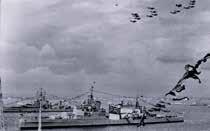
HMY Britannia made her maiden voyage from Portsmouth to Malta. Pictured: The Queen and the Duke of Edinburgh on the HMY Britannia.
The Queen presented the first Queen’s Colour to the Submarine Command, Gosport.
The Queen launched the UK’s first nuclear-powered submarine, HMS Dreadnought, at Barrow-in-Furness. The submarine’s keel had been laid by the Duke of Edinburgh the year before.

The Queen and the Duke of Edinburgh visited Dartmouth to review the Passing Out Parade at Britannia Royal Naval College. Pictured: The Queen at BRNC during her reign.
The Queen assumed the Office of Lord High Admiral with the creation of the Ministry of Defence.
Visit by the Queen and Duke of Edinburgh to the Fleet at the Clyde Anchorage in HMY Britannia. A total of 73 warships were present, the largest assembly of warships since the Coronation Review in 1953.


First Lord of the Admiralty Albert Victor Alexander — the political head of the Navy — was impressed by the young princess’ bearing. She had, he noted, carried out her duty in a “clear and decisive way”.
With the untimely death of her father in 1952, the role of Monarch brought a myriad of naval duties.
When the Royal Navy – and warships from across the Commonwealth –mustered in the Solent for the Coronation Fleet Review in June 1952, The Queen expressed her great pleasure and looked forward “to the further visits which I hope to make to you in the future.”
In the seven decades since, no year has passed without Her Majesty’s attendance at or involvement with the Senior Service: launchings, commissionings, official openings, formal and informal visits to ships and units, Colours presentations, decorating men and women who had gone above and beyond the call of duty, and Beat Retreats performed impeccably by the Band of HM Royal Marines.
There have been four jubilee celebrations – with accompanying medals for eligible personnel.
Some have been marked by gatherings of warships from around the
world; others smaller-scale affairs such as supporting a river pageant on the Thames. Of the numerous vessels she has sponsored since launching HMS Vanguard, only two remain in service today: HMS Lancaster (‘The Queen’s Frigate’) and HMS Queen Elizabeth.
Both are currently deployed on active service: the frigate with NATO in the Mediterranean, the carrier crossing the Atlantic to host an international security forum.
Each ship provides regular updates on their activities and progress, the sponsor visiting when her busy schedule allowed (2014 for Lancaster, when The Queen famously joined crew on the forecastle for a unique ship’s photograph; May last year for HMS Queen Elizabeth).
There have been numerous opportunities to witness the Royal Navy operationally: a Royal tour of South Africa with HMS Vanguard in 1947; an official visit to Athens aboard HMS Surprise, Flagship of the Commander in Chief Mediterranean, in late 1950, escorted by HMS Magpie, with her husband in command.
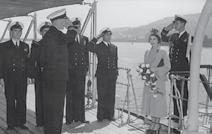

Her first world tour as Sovereign, started in the SS Gothic, and completed in the new HMY Britannia, was escorted by a series of RN and
Commonwealth ships.
There was no vessel of which she was fonder than the Royal Yacht, beloved by both the Royal Family and the men who served aboard for more than 40 years.
The Royal Navy was often called upon to provide an escort for Britannia, whether at the highest profile of State visits, such as the US Bicentennial Fleet Review in 1976, or to guard the Royal Family’s privacy during their summer holiday cruises in the Western Isles. Britannia also provided one of her strongest links with the Royal Marines through the frequent embarkation of the Royal Marine Band Service, though she was also Patron of the RM Association from 1952 until her death and made Prince Philip Captain General Royal Marines on the day of her Coronation.
Above all, aided by the burgeoning jet age, the vessel carried The Queen and her family to parts of the now Commonwealth undreamed of by any previous British monarch – each voyage, each encounter with the indigenous peoples and inhabitants of countries large and small, dignitaries and rulers, each visit recorded for posterity by naval photographers.
HER MAJESTY AND THE ROYAL NAVY: A TIME LINE CONTINUES ON PAGE 6 AND 7 1937 1952 1944 1953 1947 1954 1947 1959
1960 1962 1964 1965
HER MAJESTY AND THE ROYAL NAVY
Most such visits were joyous occasions, but The Queen has been there for sailors and Royal Marines and their families in darker times. Every time they have gone into action – from Suez to Iraq and Afghanistan – they have done so with words of encouragement and support of their monarch ringing in their ears.
For The Queen never forgot the sacrifices demanded by Service life. Her two eldest sons followed their father into the Service: the future King Charles III entered Dartmouth in 1971, his younger brother Andrew in 1979. Charles rose to command a minesweeper, HMS Bronington, and his brother flew in the Falklands in 1982 during a 22-year-career.
The Queen’s understanding and insights as the daughter, wife and mother of sailors were underscored when she addressed the Armed Forces in 2009: “Wherever you are deployed in the world, you should be assured that I and the whole nation are deeply thankful for the part you play in helping to maintain peace around the globe.”
And she has always grasped the importance of the Royal Navy to the peace and prosperity of the United Kingdom.


The single greatest connection between Her Majesty and the Royal Navy as a formal appointment was her assumption of the Office of Lord High Admiral in 1964, one of the nine Great Offices of State, which enabled the Royal Navy to exist under the royal prerogative. She held the office for nearly half a century, before bestowing it upon on the Duke of Edinburgh to mark his 90th birthday in 2011. The Office reverted to the Crown on his death last year.
It is a role which dates back to the 14th Century and Her Majesty grasped its significance from the outset.
“Every Sovereign since those days has recognised the great responsibility of the Royal Navy as the protector of our island home.
“The safety of all those who ‘pass on the seas upon their lawful occasions’ has continued to rest on the broad shoulders of the men and women of the Royal Navy.”
The Queen, accompanied by the Duke of Edinburgh, presented new colours to 45 Commando Royal Marines at Plymouth.
Picture: NMRN
The Queen launched the new Type 42 destroyer HMS Sheffield at Barrow-inFurness.
Silver Jubilee of the Fleet at Spithead. The Queen and other members of the Royal Family sailed in HMY Britannia.


41 Commando Royal Marines carried out London Ceremonial Duties, mounting the guard at Buckingham Palace, Windsor Castle, St. James Palace and the Tower of London, for only the second time in the history of the Royal Marine Corps.
The Queen attended the commissioning ceremony for HMS Invincible in Portsmouth.
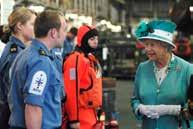
RFA Fort Austin hosted a visit by the Queen and the Duke of Edinburgh at Portland to commemorate the 70th anniversary of the confirmation of the RFA’s Official Status by Order in Council.
Launch of HMS Lancaster, “the Queen’s frigate”, by the Queen at Yarrow Shipbuilders.

HMS Cardiff provided support during the Royal visit of the Queen to the City of Cardiff, with personnel provided for ceremonial duties.
The Queen performed the official naming ceremony for HMS Ocean, becoming her official sponsor, at Barrow-in-Furness.
Pictured: HMS Ocean anchored off the Rock of Gibraltar

HMS Invincible hosted a visit by The Queen, during which she met many of the crew and observed flying operations.

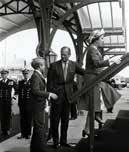

Pictured: The ship’s company in 2004
The Queen and the Duke of Edinburgh embarked in HMS Endurance to review the Fleet assembled at Spithead for the Trafalgar 200 International Fleet Review.
Visit by the Queen and the Duke of Edinburgh to HMS Ocean in Devonport, taking the salute from the ship’s Ceremonial Guard.
1969 1980 1998 1971 1981 2004 1977 1990 2005 1978 1993 2010
The Queen and the Duke of Edinburgh attending the Royal New Zealand Polynesian Festival
Making the right pension choices at each stage of your career can impact significantly on your future financial security. Even choosing the best time to leave can make a substantial difference to your pension. Deciding whether to buy pension top-ups, opting for commutation, resettlement grants, early departure payments – all have a bearing on what you’ll receive.
And now even greater complexity has been added as a consequence of the so-called McCloud Remedy. This affects all those serving on or before 31st March 2012 and on or after 1st April 2015 (including service leavers). You will have to choose between the benefits of your legacy scheme and AFPS15 for the remedy period. This decision will need to be made from October 2023 onwards.

To be sure you make the most of your options, join the Forces Pension Society and access the individual guidance provided by our expert team of Forces Pensions Consultants.
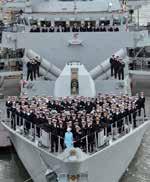

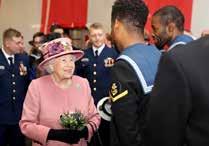
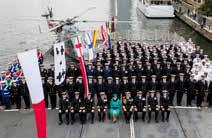



Independent, not-for-profit Independence is vital to our work, calling governments to account whenever we spot unfairness or injustice in the system. We also give you a voice where it counts, on the representative bodies for Armed Forces and Public Sector Pensions.

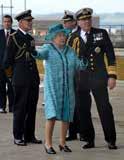


We are funded by our Members’ subscriptions. Any surplus helps fund our outreach programmes of Roadshows, Webinars and our attendance at CTP Employment Fairs.
also have
of
and
to
and
(including


a
from
Visit: forcespensionsociety.org/join-now/ Annual membership for you and your spouse/ partner is just £42. You will have exclusive access to our Forces Pensions Consultants, our informative Members’ Webinars
you’ll receive our bi-annual e-newsletters and magazine, Pennant. You’ll
access
our wide range of membership benefits
discounts on new cars
white goods, to insurances
our latest range
Covid-protected travel policies), plus
great deal more. IT PAYS TO UNDERSTAND YOUR PENSION Forces Pension Society 68 South Lambeth Road, Vauxhall, London SW8 1RL. T:020 7820 9988 E: memsec@forpen.co.uk www.forcespensionsociety.org Scan to join Your pension choices can make a big difference to your financial future. Join us. Job done. 2017 2017 2018 2021 HMS Sutherland undertook an engagement visit to London including hosting the Queen at a formal The Queen attended the commissioning ceremony for HMS Queen Elizabeth in Portsmouth. HMS Ocean formally decommissioned at Devonport in a ceremony attended by her sponsor, the Queen, and the First Sea Lord. HMS Queen Elizabeth hosted a visit by the Queen at the start of her Carrier Strike Group deployment. 2010 2014 2014 2016 The Queen presided over Royal Divisions on board HMS Ark Royal as part of the ship’s 25th anniversary celebrations. HMS Lancaster hosted a visit by the Queen in Portsmouth. The Queen performed the naming ceremony for the new aircraft carrier HMS Queen Elizabeth in Rosyth. Armed Forces celebrate the Queen’s 90th birthday in Windsor.


Atkins & Co. Chartered Accountants are fully regulated by ICAEW (Institute of Chartered Accountants in England & Wales) E: info@atkinsandco.com W: www.atkinsandco.com • Over 14 years experience • Family connections with RN and RM • Bootneck and Matelot friendly • Qualified accountants covering all areas of accounts, tax returns and Ltd Companies • Self Assessment tax returns including rental property, child benefit, Pension excess, income over £100k Do you drive from home to work? Do you own your own car? Have you worked in different locations? You could be entitled to thousands of pounds in TAX REFUNDS. Millions have already been received by your colleagues. FIXED FEE OF £120 PER YEAR NO REFUND – NO FEE
HER MAJESTY the Queen’s death takes precedence this month with the Senior Service at the heart of events across the mourning period and at the funeral in London, including 142 sailors hauling the State Ceremonial Carriage in the capital (see pages 2-3)
The Queen’s rich history with the Royal Navy is also highlighted (see pages 4,5,6 and 7)

Despite the RN’s dutiful focus on Her Majesty and the beginning of service to His Majesty King Charles III, operations, training and exercises have continued apace.

HMS Westminster, HMS Lancaster and HMS Richmond tracked a Russian Navy task force in waters close to the UK (see page 11), including shadowing Slava-class cruiser, Marshal Ustinov –the sister ship of the ill-fated Moskva which sunk in the Black Sea in April.
Westminster was then involved in a formidable display of missile firepower with United States allies against a specially prepared ex-US Navy warship in the North Atlantic alongside a Wildcat from 815 Naval Air Squadron (see page 19)
In other missile-related action, the Navy’s two new air-to-surface anti-ship missiles have been undergoing extensive tests in the hands of expert aviators and scientists and a Wildcat helicopter (see pages 16-17)
Further away from Britain’s shores, HMS Albion is leading a task force to the Mediterranean. The amphibious flagship leads RFA Argus, RFA Mounts Bay, RFA Tidesurge, HMS Defender, Royal Marines and three helicopter squadrons (see page 13)
Below the waves, HMS Audacious has
completed her second patrol of the Mediterranean, while the latest Astute-class attack submarine, HMS Anson, is commissioned into the Royal Navy fleet (see pages 14-15)
Into the Pacific, sisters HMS Tamar and HMS Spey have continued their patrols of the vast region.
Tamar has been operating around the Philippines, working with search and rescue teams and helping communities build infrastructure. Spey meanwhile has been in the southwest Pacific on operations to protect local fishing stocks (see pages 20-21)
In the Gulf, we meet the guardians of the gateways to the Middle East (see page 38)
Dozens of Ukrainian personnel are being trained by the Royal Navy to use hi-tech crewless vehicles to help them hunt mines (see page 27)
It’s farewell to one of the Royal Navy’s longestserving – and best known – sailors as Vic Parsons retires after nearly half a century’s service (see page 23)
An adventurous training centre set in the stunning scenery of Bavaria is now fully open to Royal Navy and Royal Marines personnel (see page 37)
One of the last living links with the legendary Great Escape has been cut with the death of naval aviator Captain Vyvyan Howard aged 102 (see page 31)
A talented Royal Navy chef has taken one of ten spots in the final of a national culinary competition (see page 39)
The Royal Navy family – and the sport of rugby union – have lost one of their biggest characters with the untimely death of Chief Petty Officer Graham ‘Sid’ Street (see page 28)
Flagship heads for the USA
THE fleet flagship has left Portsmouth bound for the United States – and ahead of an autumn on operations and exercises in European waters.
In the coming months, HMS Queen Elizabeth will be at the heart of a powerful task group made up of thousands of sailors, up to ten ships, F-35B Lightning jets, helicopter squadrons and Royal Marines Commandos which will operate across Europe this autumn.
But the aircraft carrier first deploys to the east coast of the United States to undertake parts of HMS Prince of Wales’ deployment –as her sister ship undergoes repairs.

HMS Queen Elizabeth’s Commanding Officer, Captain Ian Feasey, said: “After a period of maintenance it is fantastic for the Fleet Flagship to be underway again to conduct operational activity with allies and partners.”
The Royal Navy task force will work closely with allies and partners across Europe – from the Baltic all the way south to the Balkans and Black Sea region – over the coming months.
The operations are part of galvanised NATO efforts in the face of Russia’s unprovoked invasion of Ukraine to safeguard security, stability and prosperity across Europe.
HMS Queen Elizabeth will primarily be focused on operations in the Baltic and work closely with forces from Denmark, Estonia, Finland, Iceland, Latvia, Lithuania,
the Netherlands, Norway and Sweden. Together, these nations form the UK-led Joint Expeditionary Force, which is designed to react to crises whenever and wherever they unfold.
Before the operational phase of the deployment, HMS Queen Elizabeth will be in New York to host the Atlantic Future Forum – a conference that brings together the brightest minds and most influential thinkers from defence and beyond to strengthen UK and US bonds.
Submarine hunting frigate HMS Richmond accompanies the aircraft carrier across the Atlantic.
AB Warfare Specialist Callum
Rotherforth from HMS Richmond is on his first deployment. He said: “I’ve never been to the USA so I’m really looking forward to going to New York. I want a picture on top of the Empire State Building. It is so cool to be part of a task group sailing across the Atlantic.
“As a radar operator, I’m looking forward to working with our shipmates in HMS Queen Elizabeth.”

AB Sophie Profitt from HMS Queen Elizabeth is on her first deployment too. She added: “I feel nervous but massively excited and grateful for the opportunity.
“I am looking forward to getting to know what it’s like on board at sea.”
9OCTOBER 2022 :royalnavy.mod.uk/navynews By Appointment to Her Majesty The Queen Medallists Worcestershire Medal Service Ltd Bromsgrove Worcestershire Medal Service Ltd Specialists in Orders, Decorations and Medals 56 Broad Street, Sidemoor, Bromsgrove, B61 8LL Medals mounted for wear and display Miniature and full size replacement medals supplied, all made in the UK to the highest standard. See our web site where you can order securely on-line www.worcmedals.com or call 01527 835375 and our team will be pleased to help you. British Defence Singapore Support Unit Gibraltar Squadron HMS Trent 17 TES SQN On patrol somewhere beneath the Seven Seas is one Vanguard-class submarine and an undisclosed Trafalgar or Astute-class boat Training or on patrol around the UK HMS Richmond HMS Lancaster HMS Kent HMS Dauntless HMS Duncan HMS Tyne HMS Mersey HMS Severn XV Patrick Blackett Project Wilton 814 NAS 815 NAS 824 NAS 825 NAS PORTSMOUTHDEVONPORT FASLANE HMS Gannet YEOVILTON 45 CDO 40 CDO 3 CDO BDE/ 42 CDO CLR 43 CDO Lightning Force ROSYTH CULDROSE HMS Forth NEFI HMS Medway UKMCC NSF Bahrain IMSC COMUKMCMFOR HMS Montrose HMS Middleton HMS Bangor HMS Chiddingfold 1700 NAS RFA Cardigan Bay Forward Support Unit Operation Kipion n SUBSCRIBE ONLINE AT ROYALNAVY.MOD.UK/NAVYNEWS n News@royalnavymail.mod.uk n advertising: subs@royalnavymail.mod.uk
HMS Spey
HMS
Protector HMS Queen Elizabeth HMS Richmond HMS Albion HMS Defender RFA Mounts Bay RFA Argus RFA Tidesurge 845, 847, 815 NAS 45 Commando
HMS TamarHMS Scott
HMS Westminster HMS Magpie
HMS Anson


1 in 3 veterans have felt suicidal in their lifetime.* READ LINES between the Maybe catch up soon. Everyone would be better off without me. I can’t face the world any more. Sorry I’ve not been out recently. I’ve had it mate. I’m done. I’m a bit down but I’ll soldier on. ... Could you read between the lines? We’re on a mission to create suicide-safer communities for veterans. Take our free 30-minute suicide awareness training. Visit helpforheroes.org.uk *31.8% of veterans have felt suicidal in their lifetime. Research conducted by YouGov Plc into mental health and suicide in UK adults and the Armed Forces Community. July 2022, total sample size of 8346 adults.
TRACKING THE MOSKVA’S SISTER SHIP IN UK WATERS
THREERoyal Navy warships have been on a concerted operation shadowing a Russian Navy task force in waters close to the UK.
Type 23 frigates HMS Westminster, HMS Lancaster and HMS Richmond tracked Slava-class cruiser, Marshal Ustinov – the sister ship of the illfated Moskva which sunk in the Black Sea in April – and Udaloy-class destroyer, Vice-Admiral Kulakov, plus their tanker Vyazma.
The British ships tracked the Russian task group as they made their journey home from the eastern Mediterranean after supporting Russia’s unprovoked invasion of Ukraine since February.
The frigates and their helicopters used an array of cutting-edge sensors and modern naval technology to keep close watch in the Celtic Sea and through the English Channel.
HMS Westminster’s Commanding Officer, Commander Ed Moss-Ward, said: “Maritime security in the sea areas around the UK is crucial to our prosperity and resilience.
“The Royal Navy routinely responds to escort warships in UK territorial waters and the adjacent sea areas to ensure compliance with maritime law, to deter malign activity and to protect our national interests.
“Escorting the Russian task group has demonstrated that the Royal Navy is committed to maintaining maritime security and to co-operating with our NATO Allies.”
HMS Lancaster shadowed the Russian ships from the Strait of Gibraltar to the Celtic Sea as part of NATO’s fast response task force in the Atlantic (Standing NATO Maritime Task Group 1).
“Working together allows NATO allies to respond to security challenges at pace and collectively deter potential aggressors,” said Commander Tom Johnson, Commanding Officer of HMS Lancaster.
“Exchange of personnel further deepens NATO cohesion and interoperability so that the alliance can swiftly and efficiently react to any threat. Lancaster’s team work exceptionally hard to ensure we are always ready to respond to any threat at a moment’s notice.”
HMS Westminster deployed from Portsmouth to intercept the Russian ships in the Celtic Sea, where they paused, dispersing up to 60 nautical miles while the Marshal Ustinov was refuelled.
HMS Richmond was called upon to keep watch in the English Channel. Commanding Officer, Commander Chris L’Amie said: “At short notice, HMS Richmond intercepted the Russian Federation Navy’s Surface Action Group in the English Channel.
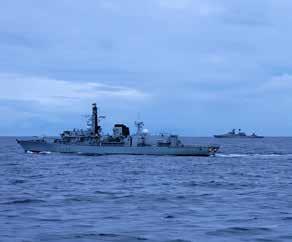
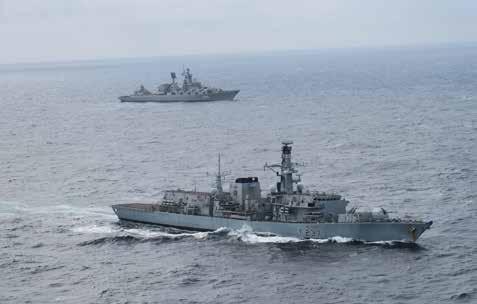
“We will closely monitor the task group’s activity whilst demonstrating the UK’s resolve, and the capability and professionalism of the Royal Navy.”
MERSEY ON THE BEAT AS RUSSIANS SAIL NEAR UK
HMS MERSEY shadowed Russian tanker Akademik Pashin through the Channel.

The Portsmouth-based patrol ship was called upon to monitor the movements of the Pashin from the North Sea, through the Dover Strait and down the leg of the Channel towards the open waters of the North Atlantic.
The oiler is the first tanker built for the Russian Navy since the end of the Cold War, supplying the ships of the Northern Fleet with the fuel they need to sustain operations.
Able Seaman Jordan Mavin who was on watch and who detected the Pashin visually said: “I was chuffed to be the first person to get ‘eyes on’ and identify her.
“We were aware of her movements for some time and everything came together to allow us
to shadow her. Operating so close to our own coastline I was proud to be part of the team who monitored her movements.”
His Commanding Officer, Lieutenant Commander James Mitchell, added: “It has been a team effort, working with our NATO partners monitoring the movements of Russian vessels through the North Sea and English Channel.
“Whilst most of the UK has been enjoying a record summer of warm weather, Mersey is just one of a number of Royal Naval vessels maintaining a continuous presence at sea, protecting UK interests.”
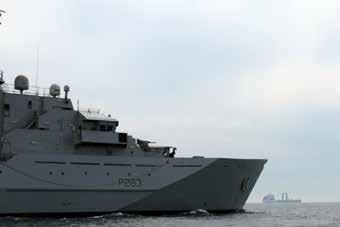
The Pashin continued her voyage into the Atlantic, while HMS Mersey resumed her patrols of home waters.
Shortly after this operation, Mersey was
called into the fray once more.
This time she shadowed Russian military research vessel Akademik Ioffe on its journey south through the Dover shipping lanes and into the Channel.
This was happening at the same HMS Lancaster, HMS Westminster and HMS Richmond tracked the cruiser Marshal Ustinov and destroyer Vice-Admiral Kulakov.
With her sister patrol ships HMS Tyne and Severn, Mersey provides the Royal Navy with a constant presence in UK waters and environs, monitoring contacts of interest, keeping an eye out for illegal activities, and ready to support the Marine Management Organisation to ensure fishermen of all nationalities stick within the rules and quotas when trawling in our fishing grounds.
11OCTOBER 2022 :royalnavy.mod.uk/navynews
FRIGATES AT THE READY: HMS Richmond , above, keeps watch on cruiser Marshal Ustinov after HMS Westminster, right, did the same in the Celtic Sea
Mersey shadows tanker Akademik Pashin
WATCHING EVERY MOVE: The view from HMS Westminster as cruiser Marshal Ustinov sails back to Russian after being deployed in the Mediterranean
THERE THEN, HERE NOW
1982, SSAFA, the Armed Forces charity helped support all those who were part of the Falklands Taskforce. Those incredible members of the Royal Navy, Army and Royal Air Force and their families a ected by the conflict received practical, emotional or financial support they deserved.
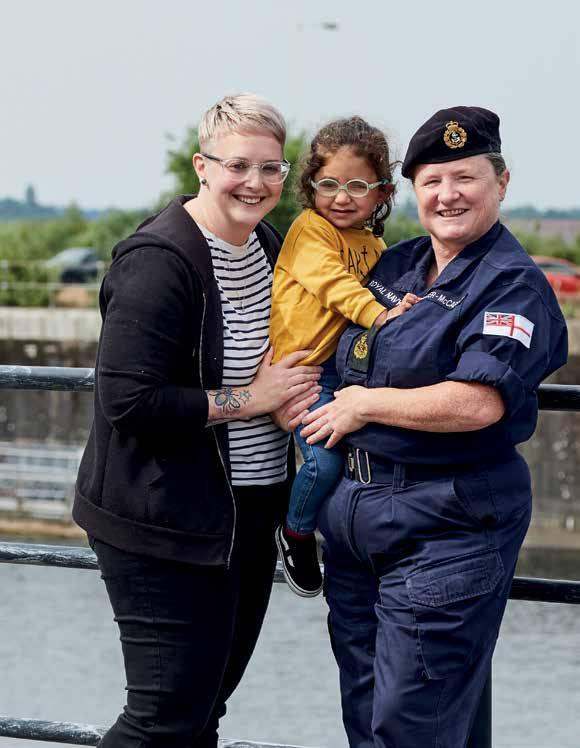

it today.
needed help then or do so now, reach out to Forcesline for
confidential help that lasts - don’t keep quiet, talk to
Registered as a charity in England and Wales Number 210760 in Scotland Number SC038056 and in Republic of Ireland Number 20202001. Established 1885. Regulars | Reserves | Veterans | Families
In
And we still provide
Whether you
free and
us. 0800 260 6767 Free and confidential. Open weekdays, 09:00 to 17:30 Or get in touch online at ssafa.org.uk/forcesline
THE MED AWAITS
A ROYAL Navy amphibious response force has sailed for the Mediterranean on a European security mission alongside NATO allies and partners.
More than a thousand sailors and Royal Marines have been deployed as part of Littoral Response Group North, which is a force designed to deploy to places strategically important to the UK, with a particular focus on Europe.

The response force is led by amphibious flagship HMS Albion and is made up of three helicopter squadrons, Royal Marines of 45 Commando, support ships RFA Argus and RFA Mounts Bay, tanker RFA Tidesurge, plus Type 45 destroyer HMS Defender – the group’s powerful escort warship.


In the coming months, the task group will operate closely with allies and partners, forging closer bonds and protecting the security and prosperity of this vital region with operations in the Eastern Mediterranean, North Africa and the Adriatic.
It builds on deployment for this response group in the Arctic earlier this year and in the Baltic in 2021.
Captain Simon Kelly Royal Navy, task group commander and Commanding Officer of HMS Albion, said: “For the second time this year the sailors and Royal Marines of the Royal Navy’s Littoral Response Group North have deployed.
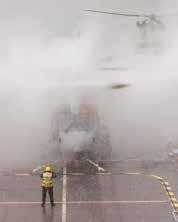
“Building on our recent operations in the challenging environment of the Arctic Circle, we now face a different challenge in the Mediterranean, a region that is vital for European security.
“Throughout the coming months we will continue to develop the Littoral Strike concept, as well as building relationships with our international partners, as we demonstrate the UK’s commitment to the region.”
The deployment will also see an element of experimentation, developing tactics and equipment as Royal Marines Commandos continue to look at new ways of operating to counter the threats of a modern era. The response force has already visited Rota in Spain
after carrying out replenishments with RFA Tidesurge off the coast of Portugal before heading into Gibraltar. This came after amphibious warfare exercises near Plymouth, putting the final touches to preparations for the deployment. It saw 45 Commando launched ashore from landing craft from HMS Albion’s 4 Assault Squadron Royal Marines and manoeuvre in land.
Commander George Storton, Commanding Officer of HMS Defender, said: “With experience of task group operations around the globe, Defender’s ship’s company is excited to operate as part of the Littoral Response Group North.
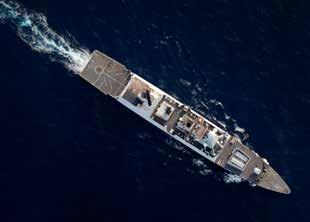
“The team are looking forward to the challenge of supporting amphibious operations and exercises with key allies and partners.”
Among the unique capabilities of this task group is the enhanced medical facilities on board RFA Argus.
These consist of an operating theatres, critical care and emergency medicine beds, a CT scanner, as well as hospital wards, with a wide range of specialist medical staff from intensive care specialist to mental health nurses.
Argus is also home to Wildcat and Merlin helicopters from Commando Helicopter Force’s 847 and 845 Naval Air Squadrons during the deployment. These navy fliers – based at RNAS Yeovilton – are tasked with providing aerial support for commandos wherever they are operating.
Captain Richard Davies Royal Fleet Auxiliary, Commanding Officer of RFA Argus, said: “Argus is a hugely versatile ship. The medical facility provides support from critical care through to more routine treatments.
“Our embarked Merlin and Wildcat helicopters, along with our large flight deck and hangar, provide the airlift to the task group which underpins amphibious operations. We also have a unique crew construct, whilst predominantly Royal Fleet Auxiliary and Royal Navy, we also have representation from the Army and Royal Air Force.”
royalnavy.mod.uk/navynews 13OCTOBER 2022 :
CLOCKWISE: RFA Argus sails ahead of RFA Mounts Bay; A Royal Marine during exercises in Plymouth; spray and rain covers Argus’ busy flight deck; HMS Defender from above as the task group sails for the Mediterranean
Pictures by LPhot Finn Hutchins and PO Phot Des Wade
Hunter-killer in the Med...
A BIRD’S-eye view of an Astute-class submarine is not something often seen, with the boats normally deep in the seas and oceans.

Another view never seen before – one of the submarines partially submerged in the azure waters of the Mediterranean as a specialist diver painstakingly cleans the hull for renewed operations (pictured below).
HMS Audacious – Britain’s newest operational nuclear submarine – has completed her second patrol, conducting maritime security operations for the UK and her NATO allies.

The boat – normally based at Faslane on the Clyde, but operating out of NATO’s base in Souda Bay, Crete, for the past six months –has been working alongside NATO surface ships on Operation Sea Guardian, monitoring tankers and cargo vessels.
It is one of the alliance’s premier missions, building up a detailed picture of movements – regular and irregular – in the busiest sea lanes, sharing the intelligence gathered in real time with NATO authorities.
The unique abilities of the Astute-class submarine means the boat can remain submerged at periscope depth, take 360-degreee images in an instant – day or night – and then return to the depths to pore over the photographs captured
at leisure.
Such visual capture of contacts of interest is just one of the methods of intelligence gathering HMS Audacious’ 98 crew can exploit from the boat’s impressive suite of sensors. When not assigned to Sea Guardian, Audacious, which is the fourth boat in the Astute class, has been honing her anti-submarine warfare skills with the Italian Navy, in particular frigate ITS Carlo Margottini.
After six months of near continuous operations, Audacious returned to Souda Bay to undergo maintenance – not just on the hi-tech sensors and systems inside the boat, but her hull as well.
As with all ships, barnacles grow on the side and underwater – especially the case when moving slowly or in warmer waters; the central Mediterranean in high summer is roughly twice as warm as Audacious’ home on the Clyde. Specialist divers were flown out from the UK, running over the entire length of the submarine’s 97-metre-long hull with what is effectively a giant, heavy duty dental hygienist’s tooth polisher – the bristles on the brushes strong enough to sweep away barnacles, but not too firmly that the black tiles which cover Audacious and are key to her stealth are damaged or dislodged.
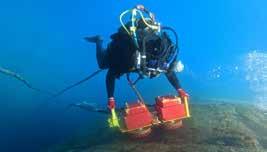
14 OCTOBER 2022: royalnavy.mod.uk/navynews
... as sister is welcomed into fleet

at a ceremony in Barrow.
Anson is £1.3bn of both naval stealth and striking power – able to gather vital intelligence, protect other Royal Navy vessels from threats above and below the waves and destroy enemy military infrastructure with pinpoint accuracy.



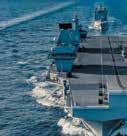

The submarine was commissioned in front of Anson’s crew and their families, plus naval leaders, Secretary of State for Defence Ben Wallace, Prime Minister Boris Johnson and Australian Deputy Prime Minister Richard Marles, and the sponsor (patron), Julie Weale, at BAE Systems’ yard in Cumbria.
Anson’s first Commanding Officer, Commander David ‘Bing’ Crosby, said that given the effort, skill and enterprise invested in constructing the submarine – made more challenging over the past two and a half years by the restrictions imposed by the pandemic – “HMS Anson would go on to be the best Astute class submarine yet”.
He continued. “Among tough competition that is a bold claim, but I fully believe it; she will be successful on operations for years to come and be envied by nations across the globe.
“The good fortune to be commanding officer of the most advanced and capable attack submarine ever built in the UK on her commissioning day is the greatest honour of my submarine career.”

Also among those eager to see Anson in action is the new head of the RN Submarine Service, Commodore Paul Dunn.
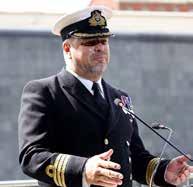

“The commissioning is a significant milestone for both Anson and the Submarine Service and I would like to thank the crew,
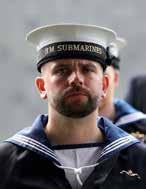







BAE Systems and the ‘submarine enterprise’ for the delivery of our fifth Astute class.

“I look forward to welcoming Anson to Her Majesty’s Naval Base Clyde, the home of the Submarine Service, in the near future.”
Armed with a combination up to 38 Spearfish torpedoes and Tomahawk Block V cruise missiles, Anson can take out enemy ships/submarines, destroy land targets up to 1,000 miles away and launch and recover Royal Marines raiding and reconnaissance teams – among other capabilities.

First Sea Lord, Admiral Sir Ben Key, said: “Given the world we live in, there is no more important tool in the United Kingdom’s arsenal: silent, unseen, and a key instrument of our global, modern, ready Royal Navy.
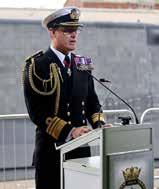






“HMS Anson is the cutting edge in submarine design and construction… ensuring operational advantage in the underwater battlespace, the last great stealth domain. “The Royal Navy’s nuclear submarines: protecting critical national infrastructure, securing the nuclear deterrent, and ready to deliver firepower against those who would do us harm.”


The Astute programme is one of the most complex engineering projects in the world. Anson will remain in Barrow for several more weeks undergoing final checks, tests and tweaks to her system before she sails for her future home at HM Naval Base Clyde in Faslane, where she will prepare for sea trials.
It has taken more than 11 years – and some 20 million hours’ work by an estimated 10,000 people from 400 firms and organisations across the UK – for the 8,000-tonne boat to be
ready for action.
The Chaplain of the Fleet, The Venerable Andrew Hillier, blessed Anson and her 98 crew after the boat’s first Commanding Officer, Commander Crosby read out instructions received from the Navy’s Fleet Commander to commission the submarine and prepare her for front-line service.
Proceedings – which saw the Royal Marines Band Scotland provide the appropriate music – ended with the White Ensign being hoisted for the first time and a commissioning cake cut by Mrs Weale and the youngest member of the crew.

Anson’s sponsor – whose husband was head of the Silent Service before retiring in 2020 – told those present that the boat was “fabulous”, and she was keen now to see the submarine at sea and enter service.


“I wish you all the best of luck with what is to follow and will be in full support of everything you do,” she added.



Anson was officially named by her sponsor in the same yard in December 2020 with a bottle of cider smashed against the hull (the drink was favoured by her namesake, 18th-Century Admiral George Anson, as a cure for scurvy).
She was rolled out of the cavernous Devonshire Dock Hall in April last year and slowly lowered into Wet Dock, since when engineers and crew have been working on her systems and testing equipment.
In February, the boat conducted a dive in Barrow to ensure the dive/surface systems and ballast tanks, depth sensors and sonars were in full working order and Anson was accurately balanced and stable when submerged.
15OCTOBER 2022 :royalnavy.mod.uk/navynews Your career in the Royal Navy was not like your school mates’. You never had two days the same, you challenged yourself and solved complex problems on the go. You travelled the world, helped people you didn’t know and were proud to be part of the bigger picture. Fancy a chance to be the one who inspires the next generation? Become a Careers Adviser. WE’RE RECRUITING THE RECRUITERS For further information email: navycnr-rtagmultiuser@mod.gov.uk • Rewarding second career • Earn £32,000 to £45,000 • Positions UK wide • Open to RN Service leavers and those who have left the service in the last three years • Vacancies at every rate
THE world’s most advanced hunter-killer submarine has been welcomed into the Royal Navy fleet
HMS
Pictures: LPhot Kevin Walton
Tooled up to put missiles to test
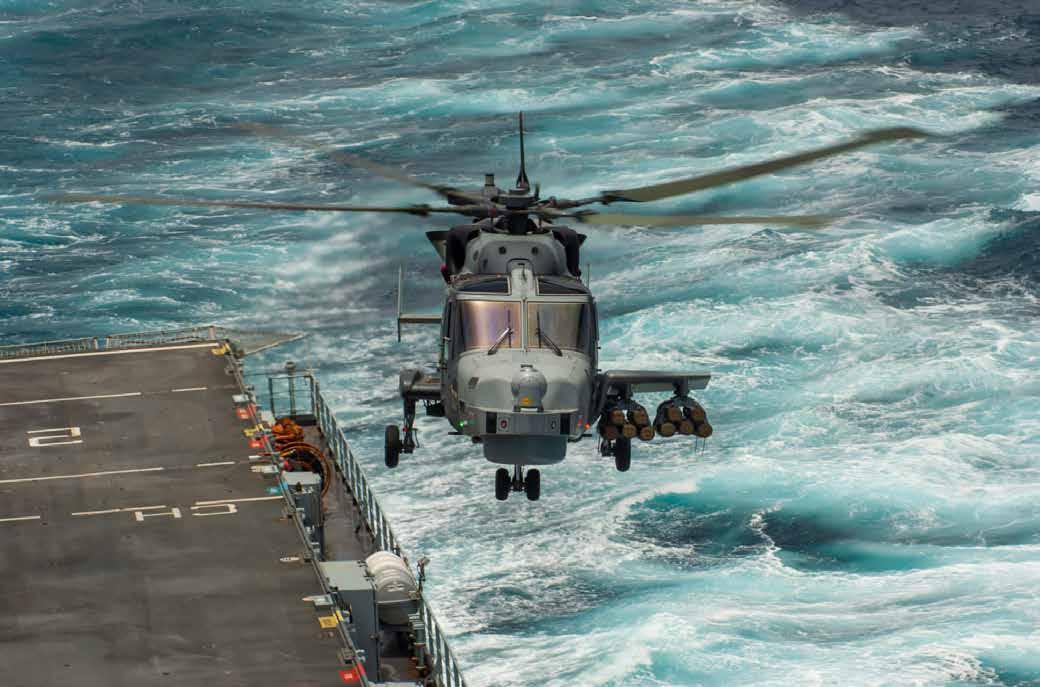

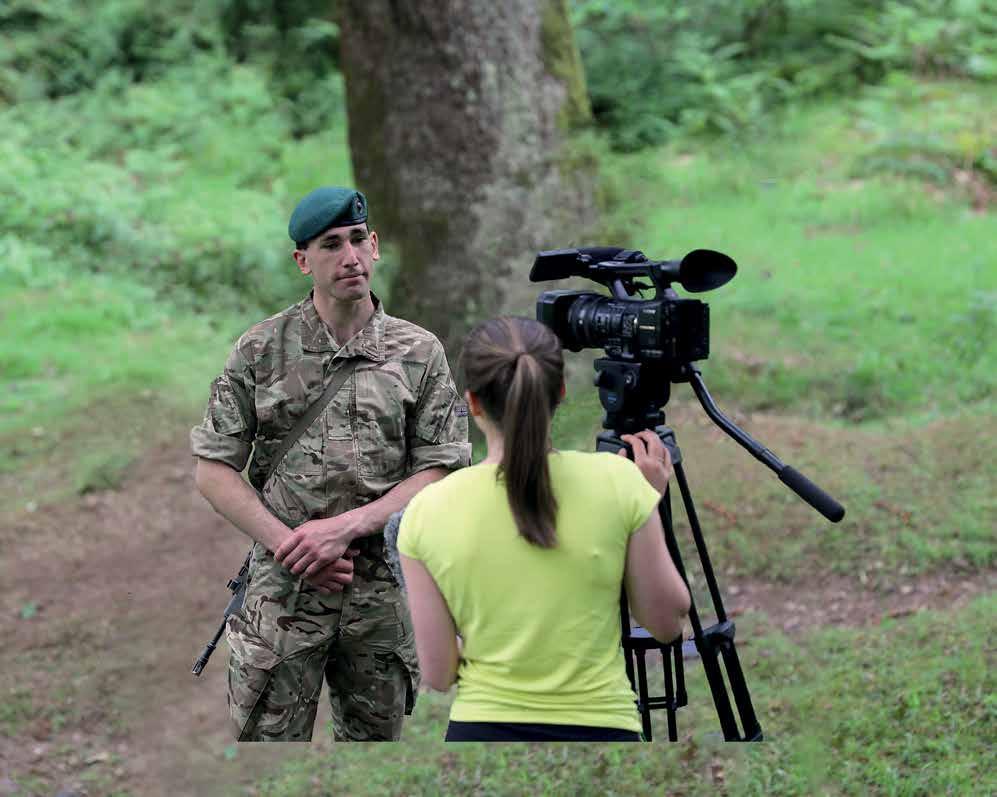
16 OCTOBER 2022`: royalnavy.mod.uk/navynews
MONTH-long trials in the Atlantic have paved the way for global operations using the Navy’s new ship-busting missiles.

Martlet and Sea Venom – the Navy’s two new air-to-surface anti-ship missiles – have completed extensive tests in the hands of expert aviators and scientists and a Wildcat helicopter.

The trials in the Atlantic and Mediterranean will help write the manual for using the weapon in various weather and sea conditions – allowing Fleet Air Arm aviators to take out small and large threats to the Fleet.

Both missiles come under the banner of the Future Anti-Surface Guided Weapon: n Martlet, a light missile weighing just 13kg, intended for smaller/lightly-protected targets; n Sea Venom, with ten times the punch of Martlet for larger, more heavily armoured warships.

Fitting either on special ‘weapon wings’ affects the way the helicopter handles, so to determine the boundaries for safe flying – known as Ship Helicopter Operating Limits – a speciallymodified Wildcat, packed with sensors, joined aviation training ship RFA Argus for a month.

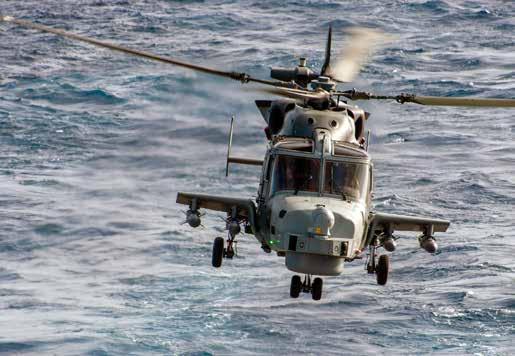
A myriad of conditions impact on the performance of a helicopter: wind speed, direction and air flow over the deck, humidity, temperature, the sea state, pitch and roll of the deck, as well as the weight and configuration of the aircraft itself.










Argus sailed more than 8,000 miles in the Atlantic, mostly between the Canary Islands and Cape Verde, and then into the Mediterranean, chasing different weather conditions.
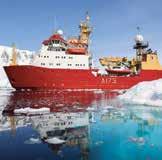
Around 30 people – aircrew, scientists, meteorologists, test pilots/engineers and technicians from across the Navy, MOD, science and industry – were involved in the trials, which saw the Wildcat from 815 Naval Air Squadron land and take off more than 900 times in different conditions/with different payloads by day and night.
Once analysed, the data will guide air/ground crew – from those straight out of training to the most experienced Fleet Air Arm aviators – in operating a Martlet/Sea Venom-armed Wildcat on frigates, destroyers, auxiliaries and Queen Elizabeth-class carriers.





From initial results, the team say the trials exceeded expectations as the Wildcat clocked up 87 hours with weapons loads in seven different configurations, with the helicopter on occasions loaded up to more than six tonnes.
Commander Joe Dransfield, Commander of the Wildcat Maritime Force sent “a massive thank-you from the front line” to the trials team, hailing the work done as “a sensational result built on great team working and investment through planning and execution.”


Martlet was fired on deployment for the first time last autumn during HMS Queen Elizabeth’s mission to the Pacific.

It’s intended to take out smaller threats to the Fleet – fast attack craft, motor boats, patrol boats with its 3kg explosive charge as Martlet smashes into its target at twice the speed of sound.
Sea Venom is twice the size, has more than double the range and is fitted with a 30kg charge. Each Wildcat can carry up to four – or a combination of Sea Venom and Martlets.

17OCTOBER 2022 :royalnavy.mod.uk/navynews Your Exclusive O fficial Royal Nav y Calendar Order Now! Our official calendar for 2023 celebrates the awesome Global Guardians of our Royal Navy featuring images that show its role sailing the world's seas protecting and helping in areas in much need of aid and assistance. There are 3 ways to purchase your copy –• Online – click on onlinecalendarshop.com/navynews and go through the simple order procedure to secure your copy. Navy News readers please quote code (GLOBALGUARDIANS23) when ordering online. Don’t forget to have your credit card details handy when you go online. • By post – send a cheque or postal order to Onlinecalendarshop.com Ltd, 2 Ringway Business Park, Richard Street, Birmingham B7 4AA. Please make your cheque payable to Onlinecalendarshop.com Ltd • By phone – call 0121 333 1553 to place your order direct with one of our friendly customer service operators. Don’t forget to have your credit card details handy when you call. Please allow 28 days from order for delivery. Onlinecalendarshop.com Ltd, 2 Ringway Business Park, Richard Street, Birmingham B7 4AA CALENDAR SHOP ONLINE MOD SEALIFT ARM DEVONPORT RINES PORTSMOUTH Royal Navy Fleet www.royalnavy.mod.uk/navynews picturepostcard:HMSProtect Ro Navy’s icebreaker,glidesthrough Channel on long-ter missio toupdahelpscientistsstudy ment pola region guinpopula grapherBelind Alker Fri Sat Sun Mon Tue Wed Thu 6 7 8 9 10 11 12 Fri Sat Sun Mon Tue Wed Thu Fri Sat Sun Mon Tue 13 14 15 16 17 18 19 20 21 22 23 24 Wed Thu Sat Sun Mon 25 26 27 28 29 30 31 December 2022M S 6 10 12 14 16 20 22 23 25 26 29 31 FebruaryM 3 11 13 15 17 21 23 26 27 New Day BankHoliday BankHoliday(Scotland) 2023 Carrier refineries,Palembang,1945 of Montforterbeek,1945 ONLY £10 inc p&p (UK)(or overseas + p&p)CODE GLOBALGUARDIANS 23 ROYAL NAVY 2023GLOBAL GUARDIANSOfficial Calendar www.royalnavy.mod.uk/navynews AMAZING FREE ShIPS OF ThE FLEET POSTER 12 AMAZING IMAGES OF ThE FLEET The 2023 Royal Navy/Navy News Calendar This official calendar makes the ideal Christmas gift, order now to beat the Christmas rush whilst stocks last. RAF 2023 Official 2023 calendar SALUTE TO THE PAST Aircraft of THE ROYAL AIR FORCE 2023 OFFICIAL CALENDAR MILITARY RANGE FOR 2023 Amazing official military calendars with powerful emotive images. See opposite and choose one of our 3 easy ways to place your order Only £10.00 inc p&p (UK). Please don’t forget to include your discount code when ordering ROYAL MARINES Official Calendar 2023 royalmarines.mod.uk/careers RED ARROWS OFFICIAL CALENDAR 2023
Below, the trials team who put the missiles through their paces with Wildcat on RFA Argus

Our lightest, most breathable Combat uniform. Engineered specifically for arid environments, the next generation Hot Weather Combat apparel is extremely lightweight, breathable and fast drying. • Designed to be worn under body armour. • Fast-drying ripstop fabric with reinforcement in areas of high wear. • Overall minimal design to reduce weight and thermal burden. • MCS BlockerTM to wick away moisture and provide UV protection. • Polartec® Power Dry® mesh jersey with antimicrobial X-Static fiber keeps you cool and dry. For more details email: info@levelpeaks.com GOLD AWARD Proudly supporting those who serve. EMPLOYER RECOGNITION SCHEME G4 HOT WEATHER COMBAT UNIFORM
CAN’T YOU HEAR, CAN’T YOU HEAR THE THUNDER?
THE Royal Navy and Royal Air Force put on a formidable display of firepower with United States allies against a specially prepared ex-US Navy warship in the North Atlantic.


HMS Westminster, a Wildcat helicopter and three RAF Typhoon fast jets unleashed fire and fury at the decommissioned frigate USS Boone using an array of high-powered weaponry.
The exercise, named Atlantic Thunder, was the first of its type for the Royal Navy in 18 years and took place alongside US Navy and US Air Force counterparts.
It was a rare live test of complex weapons against a realistic target far out to sea and tested the power and accuracy of naval and air power, giving allied forces real-world experience of hitting targets at sea from long range and proving several advanced warfighting and targeting techniques.

Type 23 frigate HMS Westminster fired two Harpoon anti-ship missiles at the same time as a US P-8 Poseidon patrol aircraft launched one of its own – 660kg of high explosive striking ex-USS Boone simultaneously.

The frigate’s Wildcat helicopter quickly followed, punching Martlet airto-surface missiles into the Boone’s hull. This was the first firing of the Fleet Air Arm’s new anti-ship weapon against a realistic target at sea – to this point Martlet had only been used against inflatable targets.
The Wildcat’s crew stayed airborne and used the on-board laser targeting pod to guide in a Typhoon fighter from 41 Squadron RAF to launch Paveway IV precision-guided munitions against the target. This was the first time an RAF Typhoon had dropped live ordnance onto a warship used as a maritime target, and the first time a Royal Navy helicopter had guided the Paveway IV on to its bullseye.
said: “Atlantic Thunder has demonstrated that UK and US naval and air forces can work together to deliver an end-to-end kill chain against a maritime target at long range.
“The integration of high-end weapons, sensors and communications with our NATO allies is key to the collective war fighting capability of the Alliance demonstrated by the sinking exercise.
“The firings have supported the development of the Royal Navy’s targeting and weapon capabilities, and afforded opportunity to conduct realistic training to validate tactics and operating procedures.”
Lieutenant Ross Gallagher of 815 Naval Air Squadron, in command of Westminster’s Wildcat helicopter, said: “The exercise presented a great opportunity for the Wildcat to showcase the Martlet missile system and to Laser Target Designate for Typhoon dropping Paveway IV.”
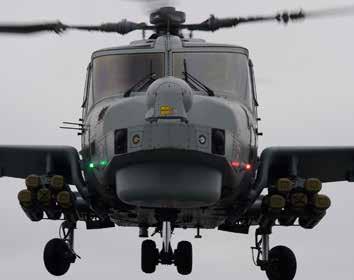
The Americans used their own multi-role SM-6 missile launched by destroyer USS Arleigh Burke, before US Air Force F-15E Eagles, assigned to 494th Fighter Squadron, guided several air-to-ground Joint Direct Attack Munitions against ex-USS Boone.
Soon after Atlantic Thunder, the target came to rest on the bottom of the ocean, where it will remain under the ownership of the US Government in perpetuity. Extensive preparations took place over many months beforehand to ensure the exercise was conducted in a safe and environmentally compliant manner, including the removal of toxic materials and pollutants from the US ship before she was able to be used as a target in this way.
Oliver Hazard Perry-class frigate USS Boone served in the US Navy between 1982 and 2012. She’s named after Vice Admiral Joel Thompson Boone, a Medal of Honor recipient and the most-highly-decorated medical officer of World War I.
19OCTOBER 2022 :royalnavy.mod.uk/navynews
Commander Ed Moss-Ward, Commanding Officer of HMS Westminster,
A harpoon missile is launched from HMS Westminster during Exercise Atlantic Thunder 22
HMS Westminster with ex-USS Boone in the background A Wildcat helicopter fired Martlet missiles during exercises
Ex-USS Boone was the hulk targeted during Exercise Atlantic Thunder
A harpoon missile is launched from HMS Westminster
TAMAR’s EMERGENCY DRILLS AND BUILDING SKILLS WHILE...
HMS TAMAR has been in and around the Philippines carrying out a range of tasks this autumn.
Sailors worked with search-and-rescue teams and also went ashore to help communities build key infrastructure.
What would happen if an airliner crashed into the waters off a Pacific island?
It sounds like the plot of a disaster movie or TV series Lost, but it was the scenario to test international military personnel, emergency services and agencies who converged on the Philippines.

It was the culmination of training involving RN patrol ship HMS Tamar and commando engineers while operating around the island of Palawan, where they’ve been supporting the US-led Pacific Partnership goodwillcommunity-humanitarian aid deployment.
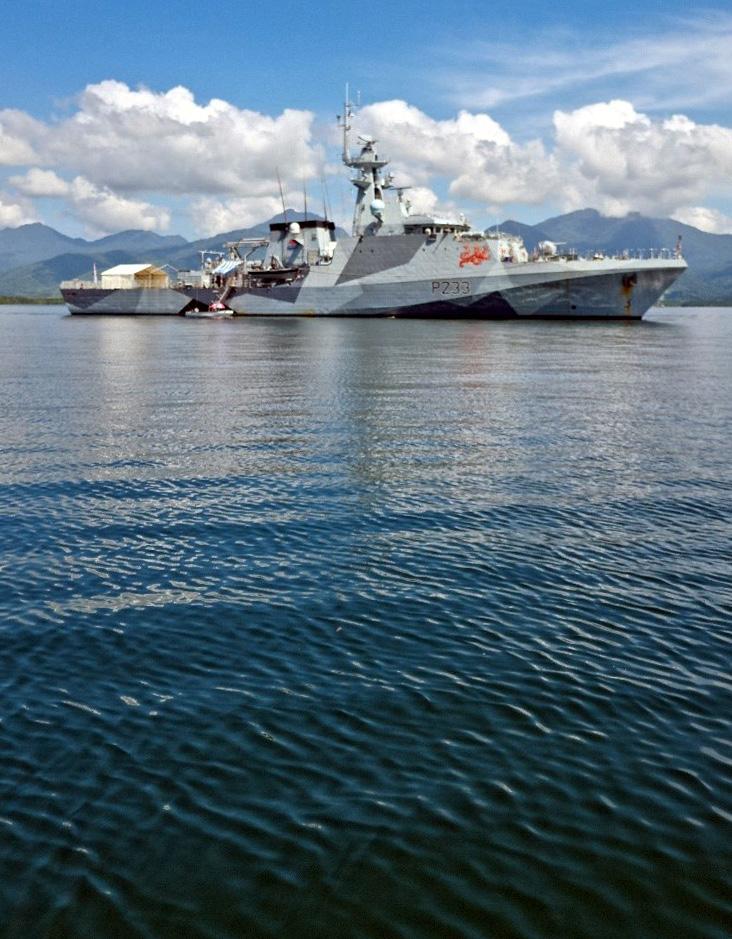
The latter formed the last act of the operation as Philippines Search and Rescue, emergency services, Australian Army nurses, hospital ship USNS Mercy’s medical team and 24 Commando Royal Engineers flexed their collective muscle to deal with a mass casualty exercise – at sea to make things more difficult.
Sailors from HMS Tamar and Philippines Coast Guard personnel were invited to play the role of victims of a plane crash – an airliner had gone down in the Puerto Princesa Bay area of Palawan.


“We often do casualty exercises in full ‘wound’ suits in Tamar, but this is the first time I have ever done one with foreign partners,” said Marine Engineer Kane Magni.
“I enjoyed getting into the role I was given as a casualty and playing the part of a burns patient.” Once located, the ‘passengers’ were transported
ashore where first responders, police, search and rescue and fire crews were on hand, while other authorities dealt with some of the environmental issues thrown up by the crash, such as fuel spillage and debris littering the bay.
After casualties had been assessed by the medical team, they were transferred to a field hospital by ambulance.
The exercise allowed participants to share resources and knowledge on casualty recovery, treatment and triage.
“As a first aider on board, it was great being on the other side of the aid giving. Seeing them do their job helped me learn new skills and allowed me to share what skills I have,” said Able Seaman Ewan Harris who normally works in Tamar’s galley.
Observing the disaster response was the RN’s Captain Charles Maynard Royal Navy, Deputy Commander of Pacific Partnership 22.
“It was fantastic to have HMS Tamar involved in the response to the search and rescue. It highlighted how important it is to exercise with international partners,” he said.
“The exercise was the highlight of our time here in Puerto Princesa regarding our capability, development and training alongside the Philippines armed forces, Coast Guard and agencies from the city.”
Away from crisis and disaster planning, Pacific Partnership ended with community sports over two days at schools and sports centres in Palawan.
Tamar’s crew played several basketball and volleyball
matches with local sides, while a US Navy-Australian Army band provided half-time entertainment.
“It was really special to play with members of the local Palawan sports teams, the Philippines Coast Guard and the US Navy.
“They were great events with a real sense of comradery and sportsmanship, it is definitely something I will never forget,” said Sub Lieutenant Leo Jeune, Tamar’s correspondence officer.
Meanwhile, the ship’s company also spent time ashore and there’s a new school on an island in the Philippines thanks to the efforts of British commando engineers. 59 Commando Squadron, 24 Commando Royal Engineers – a British Army unit which operates under 3 Commando Brigade and meets the engineering requirements of Royal Marines on the battlefield – were part of the UK’s commitment to Pacific Partnership 22.
As well as Captain Maynard and medical officer Lieutenant Lesley Hailey on the flagship, hospital ship USNS Mercy, the UK assigned Tamar and the commando engineers to the operation as part of Britain’s ‘tilt’ towards the Pacific.
The commando engineers joined their US Navy counterparts, the legendary Seabees, in helping to build a school classroom in the Aborlan region of Palawan – a single storey, two-roomed building which will open its doors to youngsters in October.
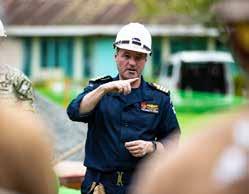
The Brits worked on the foundations up to erecting load-bearing pillars and block walls.
“The engineering tasks were immensely rewarding and educational,” said Lance Corporal ‘Bomber’ Brown.
“The limited availability of plant and equipment placed a heavy burden. Combined with an average temperature of 30 degrees it made for arduous working conditions.
“But this only served to foster a greater sense of achievement – especially in the knowledge that we were giving back to the local community.”
The engineers – who wear the coveted Green Beret having completed the All Arms Commando Course –joined in various community events including sports days and games across Palawan, which is over 250 miles long, 25 miles wide and home to nearly one million people.
“Perhaps the most rewarding was the ocean bed clean up – teams competed to gather as much rubbish from the seabed as possible, with the help of Filipino scuba divers,” said Sapper Joshua Sparrowhawk.
The engineers let their hair down at an evening of Filipino culture - a traditional lechon (roast pig) dinner evening complete with locals performing a folk dance known as ‘tinikling’.
Lance Corporal Robert Lawson said the whole experience – from working with the Seabees and Filipino troops (“all of whom were a fantastic bunch of people and beyond welcoming”) to learning new construction techniques which may assist humanitarian work in the future and gaining an insight into a culture very different from day-to-day life at 59 Squadron’s home in Chivenor, North Devon.
“This is without a doubt a deployment that will endure in my memory as a career highlight, both for the opportunities it provided me as well as for the people I spent it with,” LCpl Lawson added.
20 OCTOBER 2022: royalnavy.mod.uk/navynews
...Spey’s Chief efforts protect fishing
ROYAL Navy offshore patrol ship HMS Spey joined navies, coast guards and police in the southwest Pacific on a concerted effort to protect local fishing stocks.
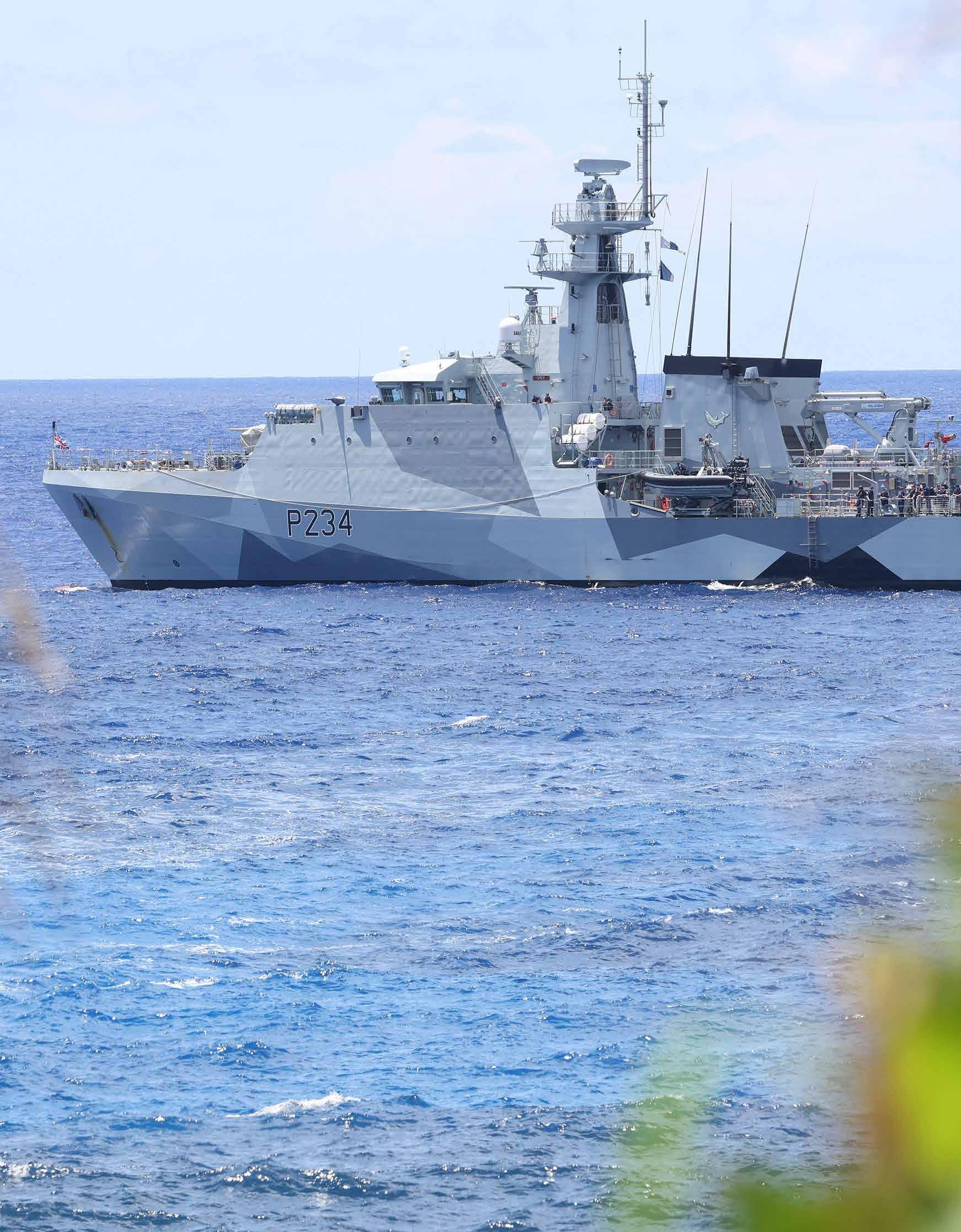
Over ten days Spey took part in Operation Island Chief, one of four concerted efforts every year focusing on detecting, reporting, apprehending and deterring illegal, unreported, and unregulated fishing.
Illegal fishing is estimated to cost the Pacific Island nations more than US $150m (£127m) every year in lost revenue.
Seventeen nations have joined forces to monitor activities across a vast area of the Pacific – more than 18.4 million square kilometers of ocean (30 times larger than the North Sea) – covering waters in the economic exclusive zones of Australia, New Zealand, Fiji, Papua New Guinea, Solomon Islands and Vanuatu amongst others.
It’s the first time the Royal Navy has taken part in the operation, one of many varied missions as part of the broader five-year Pacific mission by sister patrol ships HMS Spey and Tamar.

Spey has most recently been operating further south, first off, the northern coast of Australia, now, to the east, in the islands, centered on Fiji.
The patrol ship’s crew met members of the Fijian Government ahead of the operation, then embarked local military and police personnel as part of an agreement recently signed between the two nations.
The Fijians shared their knowledge and experience of local waters and ‘patterns of life’ – regular activities by seafarers – and efforts to curb illegal fishing, while the Brits shared their experience of similar operations around the UK, as well as general life and operations on a Royal Navy warship: gunnery, treating casualties, firefighting and damage control.
Spey worked alongside long-range maritime patrol aircraft from Australia and New Zealand and the US Coast Guard (pictured top left).
Key information was passed on to the Pacific Islands Forum Fisheries Agency, which oversees the operation on behalf of participating nations. It carried out inspections of suspect vessels in ports

as well as boardings at sea.
“This is the second time that I have worked with the Fijians and both times has been a complete pleasure,” Spey’s Deputy Coxswain, Petty Officer Marc Brown said.

“Their professionalism, willingness to get stuck in and integrate with the ship’s company has been second to none. I would be happy to work with the Fijian Navy any time.”
In a brief break in the operation, Spey’s sailors were given unparalleled access to Yadua Taba wildlife sanctuary. The site – home to approximately 14,000 crested iguanas – is not open to the public, so personnel were extremely privileged to see these rare animals.
“It’s a vital conservation project, providing a safe environment for a critically-endangered species,” said Lieutenant Gareth Senior, Spey’s marine engineering officer.
“The ranger took the ship’s company through the important work they do to preserve the iguanas’ environment and protect them from poachers and smugglers.”


21OCTOBER 2022 :royalnavy.mod.uk/navynews
Are you a digitally focused technician in the Armed Forces?
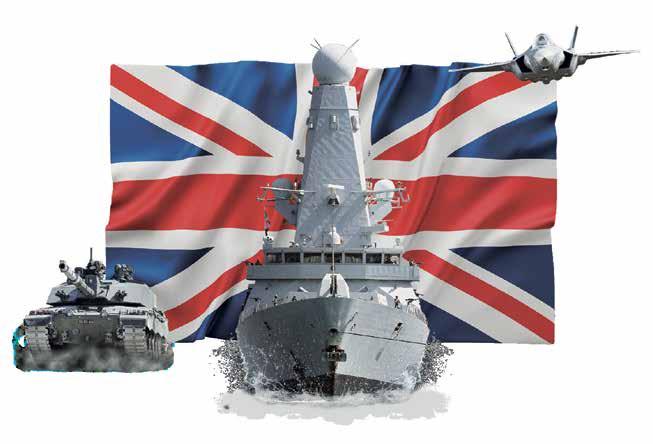
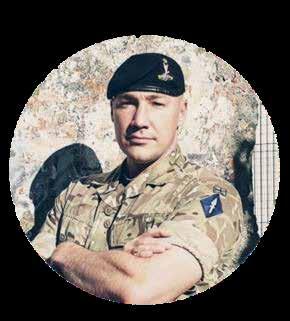
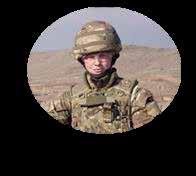
Are you involved in the design, development, and installation of ICT solutions?
If so, you could be eligible for the Information and Communications Technology Technician (ICTTech) Professional Registration.
In an increased information and data driven society, the ICTTech is more important than ever. Achieving Professional registration demonstrates an ICTTech’ s proven knowledge, understanding and competence, and could be the next step in your professional development.
Some of the benefits of ICTTech include:
Achieve an internationally recognised qualification Be recognised by colleagues, clients, and employers for your expertise and hard work
Gain greater influence in your branch of the MOD Access to life-long learning
Through collaboration the Armed Forces, a proud affiliate of our Partnership Community and the IET have developed a streamlined application route to ICTTech, the Defence Engineering Registration Scheme (DERS). View your individual service eligibly criteria here:
theiet.org/ders
Also, as an Armed forces member, you can claim all of your Professional Registration fees back!
To learn more about ICTTech and if it is right for you, join one of our membership and professional registration webinars:
theiet.org/webinarHB
The Institution of Engineering and Technology is registered as a Charity in England and Wales (No. 211014) and Scotland (No. SC038698). Futures Place, Kings Way, Stevenage, Hertfordshire, SG1 2UA, United Kingdom.
© Crown copyright 2019
“The IET professional registration recognises the high level of technical experience within the Corps”
WO1 (Bde SSM) C Lord Incorporated Engineer
“Joining the IET and becoming an ICTTech allowed me to have my knowledge, skills and experience certified and shows commitment to continuous professional development”
Cpl Basson ICTTech
Veteran Vic signs off after 46 years
IT’S farewell to one of the Royal Navy’s longestserving – and best known – sailors as Vic Parsons retires after nearly half a century’s service.
The veteran physical training instructor – and more recently expert on the Service’s digital transformation – has finally decided to call it a day, 46½ years after first walking through the gates of HMS Raleigh.
Vic “ran away to go to sea” aged just 16, joining as a regular seaman, but after just a few years decided he wanted to become a physical trainer.
Once qualified he was posted to aircraft carrier HMS Invincible – still being completed at Barrow –where as well as keeping shipmates fit, he was in charge of the ship’s money-spinning souvenir shop: mugs, ties, t-shirts sold to friends, loved ones and visitors, and bestselling HMS Invincible knickers…
Vic left Invincible before she took part in the Falklands conflict, but was sent to the islands in peacetime to help run a rest and recreation centre for personnel posted to the South Atlantic shortly after the 1982 war.
“It was like being thrown back in time 30 years,” says Vic. “We lived on a settlement where the ‘Big House’ provided the electricity from 8am to 6pm daily from their generator. Once the generator went off then we had oil lamps. There were no electric cookers and we learned to use peat stoves. There was only one telephone and that was at the ‘Big House’ for emergencies only.”
Two years at the naval base in Hong Kong (HMS Tamar) in the late 80s proved a life-changing experience as the Parson family – Vic, his wife Yve, and daughters Vicky and Becky – adopted a then eight-month boy, Lei.

That led Vic to getting heavily involved in charity events in the colony and being a driving force behind community projects, helping orphanages, children with special needs, hosting Christmas parties for Hong Kong youngsters, getting the ex-pat community involved in swimming events and setting up a play park for children.
“My time at HMS Tamar was life-changing,” Vic says three decades later. “Not only was I fortunate enough you be selected for promotion to Chief Petty Officer as a reward for all my hard work but more importantly I learned a great deal about life, how difficult it can be for some people and cultures, and how much a small token of help and support can make a huge difference to their lives.”
Returning to the UK, Vic continued his charity/ community work, met the Queen Mother while serving aboard HMS Ark Royal, received the MBE and was put in charge of training new generations of naval physical trainers
His 26 years of experience were called upon to help bring new frigate HMS St Albans into service in Portsmouth – a job he describes as “one of the best of my career”, acting as a ‘father figure’ for every rating aboard the ship, advising the command team on any potential issues or problems.
“The biggest memory was how clever the young people were onboard to operate the sophisticated
equipment needed to fight the ship,” Vic said. “Technology has certainly come a long way since my days onboard HMS Devonshire when our only method of communication was a letter (if we were lucky) when we came into port.”
Vic was subsequently named the Navy’s second Command Warrant to the Second Sea Lord feeding back the mood, comments and outlook of the lower decks to the Service’s head of personnel.
Since then he’s helped to shape how the Navy crews its frigate flotilla and, since 2011, he’s been involved in a raft of personnel projects, not least digitising many ‘paper-based’ activities to make things easier for sailors and make the Navy itself more efficient.
“They tell me 46 years is a long time, but I can honestly say the time has flown by. I have seen and done more than ever I would have in civvy street,” Vic said.“However the main memory I will take away with me is the people. From 1976 to 2022 the people have predominantly remained the same. Keen to serve and professional in their outlook, we should not take them for granted and we should never forget that whatever we do people will always be at the heart of it.”
Now he’s decided the time has come to relax, leaving his son and one of his daughters to continue the Parsons legacy: Lei is a petty officer aviation engineer maintaining RN/RAF F-35 jets at Eglin Air
Maria is on a CALM mission
MARIA Montague, the Events Co-ordinator at HMS Collingwood, put her best foot forward to help a cause close to her heart.
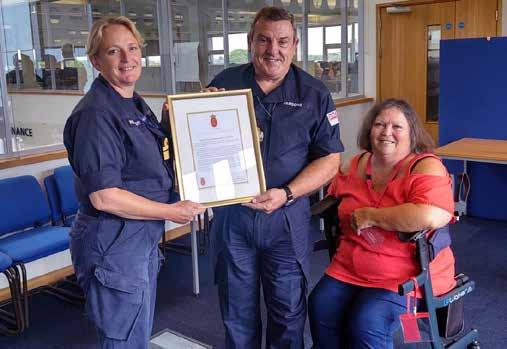
Maria, together with her partner Debbie, both pictured right, tackled the gruelling 100 km Thames Path Challenge to raise funds for CALM (Campaign Against Living Miserably).

From a helpline set up in 1997 to today, CALM has been there for anyone who is finding life difficult and who may be considering suicide.
Their approach seeks particularly to help men who often struggle to ask for help when they most need it and, sadly, 75 per cent of UK suicides are men.
With such a worthy cause in mind, Maria is keen not only to raise funds, but also awareness of this lifeline as she has personal experience of the devastation suicide causes when her much-loved brother took his own life at the age of 23.
She said: “Even though life moves on, things are never the same for those left behind. Losing a loved one to suicide is absolutely heart-breaking and can still affect you after many years.
“If walking 100km and giving up a few hours of sleep can help spare another family experiencing
Sailors control drone buoys
ROYAL Navy personnel were drafted in to demonstrate their tech know-how at a major international sailing event off the Dorset coast.
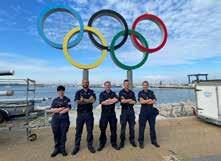

Volunteers from RNAS Yeovilton were put in charge of remote-controlled buoys throughout the RS Games – billed as the world’s best dinghy sailing event.
For the first time, MarkSetBot drone buoys were moved around to lay markers for the races – normally time-consuming and labour intensive.
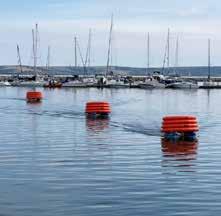
Sub Lieutenant Dan Tierney, pictured below, was among the volunteers selected by Weymouth and Portland National Sailing Academy to receive training in operating these cutting-edge nautical drones.
When Vic joined the Royal Navy in February 1976: n Mamma Mia had just been knocked off the top of the charts.
n Jaws was the big draw in the country’s cinemas.
n If you chose to stay at home on a Saturday night, Cilla Black and lollipop-loving US detective Kojak were the big TV shows.
n Liverpool were tussling for Manchester Utd for the league title while the world’s top winter athletes were aiming for gold at the Winter Olympics in Innsbruck.
n A pint of milk would cost you just 9p, a beer 33p. n Petrol was sold by the gallon: 77p – or 17p per litre n The average house price was £12,000. n An able seaman in the Royal Navy earned £2,407 a year basic salary.
nA new colour TV would set them back one month’s wages (£200), a Ford Cortina – the family car of the mid-70s – their entire year’s salary.
Force Base in the USA, while his daughter Vicky has spent 23 years as a naval dental nurse, reaching the rank of chief petty officer.
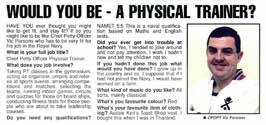
He was presented with a valedictory certificate signed by First Sea Lord Admiral Sir Ben Key and by the Navy’s head of People and Training, Rear Admiral Jude Terry.
Vic intends to spend his retirement enjoying his garden, reading the daily papers at leisure and especially taking his grandson Rowan to Portchester Castle which, despite living most of his career in the Portsmouth area, Vic has never visited.
“They are really good,” Dan explained. “I can send them to any point on the map, I just input the angles and distances required between buoys and the course is created, I then click navigate and the buoys move themselves into position and hold themselves there using in-built GPS.”
The RN volunteers were on hand from early in the morning until late at night – and not just on the drone buoys.
Some were invited to try out new allelectric RIBs, being tested as safety boats.
As part of Initial Officer Training at BRNC, all commissioned officers gain a RYA powerboating qualification.
That allowed officers volunteering in Weymouth to perform marshalling, buoy movements and safety duties.
RN personnel were also used to assist with site management, boat movements, race marshalling and crewing some support boats.
Peter Allam, a former Olympic bronze medallist and chief executive of WPNSA (and former Olympic bronze medallist) said the Navy volunteers were “outstanding”.
what we have, then every step will be worth it”. You can support the due by visiting their JustGiving page - Life is for living! fundraising for Campaign Against Living Miserably.
23OCTOBER 2022 :royalnavy.mod.uk/navynews
Vic Parsons receives his valedictory certificate from Rear Admiral Jude Terry, watched by his wife Yve
Vic offered PT tips in a Navy News article in 1997

Submariners’ cycle challenge
TWO submariners set off on a 3,484km epic ride around France to raise money and awareness for military mental health.

Lieutenant Commander Darren Lunn and Warrant Officer Adam McCrohan will tackle the Tour de France route in just 23 days.
The pair have chosen the precise course of the 2020 race – 2020 because it was the year their friend and fellow submariner Captain Jim Simpson, pictured right, tragically took his own life.
His death served as the catalyst and motivation for the duo to hit the saddle, raise money (they’ve already hit their £5k target before setting off) for Jim’s Story – a fund set up in his name under the Royal Navy and Royal Marines Charity umbrella with the aim of preventing another person suffering as Jim did, and another family having to deal with such devastation to their lives.
Marine engineer Jim had shown no indication that his mental health was suffering and excelled at everything in life, from his career to his personal life as a loving husband and father of two.

“The news of Jim’s death sent shock waves through the entire submarine community,” said Darren. “Adam and I hope our challenge will raise awareness of mental health and encourage those in a similar position to seek assistance.”
The riders will be aided by a twostrong support crew and a minibus provided by the Royal Naval Association to transfer them between stages.
To support the riders, you can follow their progress on Instagram (@ tourdesubmariner), donate https:// www.justgiving.com/fundraising/ tourdesubmariner and find information on help with mental health issues at https://www.help-jimsstory.com/jimsstory.
Kings Camp rules
CHILDREN participated in a huge range of sporting activities when Kings Camp came to Lomond School Sports Hall.
The popular summer activity camp, held in conjunction with the Royal Navy and Royal Marines Charity (RNRMC), was open to the children of Naval Base workers and members of the Helensburgh and Lomond community.
Some 100 kids passed through the camp each week, enjoying a range of activities designed to promote an active, healthy lifestyle.
Sponsored by the RNRMC and Captain of the Base, Captain Nick Gibbons, with grants provided by the charity, the event was open to children aged five to 17 years of age over the two weeks.
Captain Gibbons said: “This is a fantastic initiative for Clyde Community families, and as ever, I am extremely grateful to the RNRMC and Kings Camp volunteers who devote so much energy and enthusiasm into the project.”
Kings Camp hold summer and school holiday camps at a variety of location across the UK and have run a camp for the children of Naval Base workers for many years.

The company is a leading provider of holiday sports and activity day camps for children and works closely with Naval Service communities.
Kings Camp run a multi active programme which combines fun and learning. A typical day includes sports and activity sessions, along with time to socialise and team challenges.
Debi McPhee, Kings Foundation Camp Supervisor, said: “The Kings Camp Programme in Helensburgh has offered children the opportunity to have fun, meet new friends, enjoy sport, and explore new activities.
“The enthusiasm and energy from the children and their families has been incredible. We’re looking forward to working with Naval Service families in Helensburgh for year to come. A huge thank you to all who support the programme and of course to the phenomenal Kings Camp Team who have made this camp – the best one yet!”
Chance to win a gaming console
WORLD Gaming Day takes place on October 22.

This is your chance to pick up your gaming console or grab your favourite board games and join your mates to raise vital funds for the Royal Navy and Royal Marines Charity (RNRMC).
We would encourage as many different community and service groups as possible to take part.
This could be a game of Uckers in your lunch hour, an afternoon of board games, cards and kids’ games, and, of course, online gaming.
Sounds easy, right? To get started all you need to do is register online FOR FREE on givepenny.com/campaign/rnrmcworldgamingday-2022
Mark Trafalgar Night at home
WELCOME to the Royal Navy and Royal Marines Charity Trafalgar Night at Home!
For a second year round, join the RNRMC and supporters all over the country for the world’s largest Trafalgar night dinner – an evening steeped in history and heritage.
Come together with friends and family to commemorate Nelson’s famous victory and pay tribute to the events that took place more than 200 years ago.
Every penny you raise will help to ensure vital support is available to our remarkable service men, women and their families whenever and wherever they need it.
How to take part:
Bringing one of the Royal Navy’s oldest and most prestigious traditions to your dining room, Trafalgar Night at Home is your chance to get together with friends and family for an evening to remember whilst making a real difference to sailors and marines all over the UK.

1. Register! www.rnrmc.org.uk/ trafalgar-night-home
2. Plan your event. Set a date, decide on dinner and invite your nearest and dearest.
3. Get your pack. Your event pack will have everything you need to celebrate Nelson’s famous victory from the comfort of your own home. Opt for a postal or digital pack on the sign-up page.
4. Trafalgar Night at Home. Have fun with the theme and host your dinner any way you want, we’ll give you some recipe ideas but you are free to make it your own. Whether you keep it traditional or order a Trafalgar takeaway, your evening is bound to be Victorious!
5. Donate. In return for your terrific Trafalgar Night, ask your guests to generously donate to help create a world in which our sailors, marines, and their families are valued and supported, for life.
Register at www.rnrmc.org.uk/ trafalgar-night-home
Caribbean community celebrate
MEMBERS of the Royal Navy’s Caribbean community in Portsmouth and their families enjoyed a barbecue and took part in games such as football, tug-of-war and sack races.
PO Gilbert ST.Hillaire said: “I just wanted to extend my appreciation to the RNRMC, to
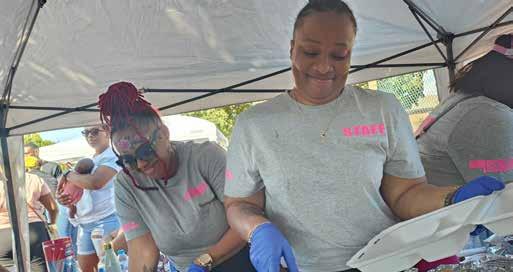
personally say thank you for your support in getting the event organised.
“The main aim of the event was to ensure that the families had an enjoyable day and I can proudly say this was achieved, as the event was enjoyed by young and old alike.”
25OCTOBER 2022 :royalnavy.mod.uk/navynews

NavyGraphics 22_0770. UK Ministry of Defence © Crown Copyright 2022 Subscribe onlin e at r oyalnav y.mod. u k/na vy new s 1 year: £35.00 UK 3 years: £95.00 UK 1 year: £43.00 Overseas 3 years: £103.00 Overseas Subscribe online or Tel: 07773 155321 Don’t miss out... Get Navy News delivered to your door –and save money SUBSCRIBE to NAVY NEWS OFFICIAL NEWSPAPER OF THE ROYAL NAVY 12 copies for the price of 10 (UK Only
Navy divers teach Ukraine sailors how to hunt mines with tech

Dozens of Ukrainian personnel are being trained by the Royal Navy to use hi-tech crewless vehicles to help them hunt mines.
Side-by-side with comrades from the US Navy, experts from the Diving & Threat Exploitation Group are teaching Ukrainians how to operate the devices, which search large areas of seabed for mines and unexploded ordnance without putting the operators in harm’s way.
The UK is giving six of the underwater drones to Ukraine and training its personnel here in Britain to use them so they can clear their coastline of mines when they return to their homeland.
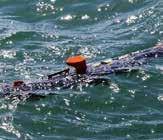
The lightweight autonomous vehicle is designed for use in shallow coastal environments, operating effectively at depths of up to 100 metres to detect, locate and identify mines using an array of sensors, so the Ukrainian Navy can destroy them.
Dozens of Ukrainian Navy personnel will be taught to use the drones by over the coming months, with the first tranche having already begun their training.
The Diving & Threat Exploitation Group is delivering three-week training courses, alongside the US Navy Sixth Fleet.
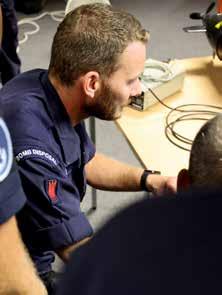
The Royal Navy has considerable experience using the small tube-shaped sonarequipped devices. The training involves launching and recovering the devices at sea, as well as interpretation of the data sent back to identify mock mines.
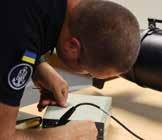
Captain Ben Vickery Royal Navy, Captain of Royal Navy Diving and Mine Warfare, said he was struck by the passion and commitment with which the Ukrainians had thrown themselves into learning.
“The Ukrainian personnel have been fantastic, and it is a pleasure to be working
with them and helping them in their struggle to defend their homeland against the aggression they are currently suffering.
“These incredible, motivated and very professional sailors have thrown themselves into the task and have made incredible progress gaining an excellent level of proficiency.
“I am hugely proud of them, and the Royal Navy Clearance Divers and Mine Warfare specialists delivering the training, standing shoulder to shoulder – stronger together to achieve this vital training mission driven by our shared values and a common bond.”
The Royal Navy is also training Ukrainian sailors to operate Sandown-class minehunters.
“Through the expert skills being taught here, our Ukrainian allies will be able to clear their own waters of mines,” said First Sea Lord Admiral Sir Ben Key.
“These weapons target shipping indiscriminately, but particularly affect civilian traffic and trade and have had a devastating impact on freedom of navigation in the Black Sea.
“This training is another powerful demonstration of the UK’s ongoing commitment to Ukraine in their fight to defend their country and repel Russian aggression.”
Russia has been weaponising food by destroying Ukrainian agriculture and blockading the country’s Black Sea ports to prevent exports, with devastating consequences for the world’s poorest people as food prices rise.
A small number of ships carrying grain have left Ukraine since the UN brokered a deal in July to allow food exports, but efforts to get food out of the country continue to be hampered by sea mines left by Russian forces along Ukraine’s coast.
27OCTOBER 2022 :royalnavy.mod.uk/navynews
‘Our greatest strength lies in our unity...’
AGAINST the stunning, colourful backdrop of the Royal Edinburgh Military Tattoo, the head of the US Navy takes the salute.
Admiral Mike Gilday, Chief of Naval Operations – the equivalent in the US Navy to the Royal Navy’s First Sea Lord – was the Senior Service’s guest of honour at the stunning display of international military pageantry following meetings with Admiral Sir Ben Key – including a visit to the home of the Submarine Service.
HM Naval Base Clyde at Faslane has also become a key logistical base for US warships and especially submarines when operating in European waters.
The US visitor was shown Valiant jetty, specially-built to support operations by the latest Astute-class Royal Navy attack submarines and toured one of the cutting-edge boats before being presented with the Royal Navy’s Dolphin brooch – the insignia worn by all British submariners to show they are qualified and safe to play their part within the elite group of men and women who serve beneath the waves.
During his visit to the UK, Admiral Gilday called in on the new Royal-US Navy joint technology hub, established between the two navies in London in 2020. The Tech Bridge fosters closer working relationships and exploits technology and equipment to the benefit of both allied navies, especially in the realm of crewless systems.
After high-level talks at the UK Ministry of Defence’s headquarters, the senior officers headed to Scotland, first to Faslane, then on to the tattoo, which has returned to Edinburgh after a three-year enforced break caused by the COVID pandemic.
“It’s been fantastic to see Admiral Mike Gilday again and to be able to host him here in the UK,” said Admiral Key. “We’ve renewed our friendship and talked about the invaluable work that our two navies are doing. Around the world our sailors serve together with our allies and partners, continuing our shared national endeavour to promote peace.
“After two years away, it’s great to be back at the Tattoo. I congratulate and thank all the performers and the organisers for a truly fantastic show with all the ceremony and pageantry that the Tattoo is famous for.”
Admiral Gilday said of the visit: “Our maritime partnership is the foundation of our mutual prosperity and security, and my travel here provides a valuable opportunity to meet with military and government leaders to further discuss our shared goals and further expand our interchangeability.
“The strength of our relationship reflects our common democratic ideals and values. Our greatest strength lies in our unity, and together we will continue to defend freedom, preserve economic prosperity, and keep the seas open and free.”
Performers at the event included the New Zealand Army Band, the US Army Field Band, the US Air Force Honour Guard Drill Team, the Top-Secret Drum Corps from Switzerland, and the Banda Monumental de Mexico.
As well as putting on a breath-taking show, the Royal Edinburgh Military Tattoo also raises thousands of pounds for service charities, with donations given to The Royal Navy and Royal Marines Charity (RNRMC), ABF – The Soldiers’ Charity, and The Royal Air Force Benevolent Fund.

Therapy available for children
CHARITY Little Troopers has secured funding from the National Lottery to launch a new programme in England to support the mental health and well-being of children whose parents serve in the Forces.
Delivered in collaboration with The Owl Therapy Centre, the programme begins this month, offering a number of free one-to-one psychotherapy sessions and community therapy groups for military offspring who feel particularly impacted by the challenges that Forces life can bring, such as having a parent deployed or moving home and school frequently.
There will also be an on-demand session available for parents to help them better support their children at home.
Open to any school-age military children from reception through to 18, the one-to-one therapy programme will include six hour-long therapy sessions with a qualified psychotherapist from The Owl Centre.
Group sessions will be aimed at military teens and will also be delivered in person by a qualified Owl Centre psychotherapist, who will visit local youth clubs, cadet units, community centres, afterschool clubs and other community groups.
Group leaders will be able to apply for a session for up to ten children via the Little Troopers website.
“We have seen a big increase in the number of families contacting our charity, worried about how military life is impacting the well-being of their child,” explained Louise Fetigan, the charity’s founder.
“Our last two annual Family Surveys also revealed a sharp increase in families wanting additional support.”
The National Lottery grant will sustain the programme for two years, providing one-to-one therapy sessions for 100 children and 50 group sessions – benefiting a total of 600 children.
For details see www.littletroopers.net or email info@littletroopers.net
Tanks for the upgrade
A FIVE-year £80m project to revamp Gosport’s naval fuel depot has finished with the new-look site ready to support the Fleet of today – and tomorrow.

The 30-acre site, sandwiched between the south shore of Forton Lake and Forton Road, has stored fuel for Royal Navy warships and other MOD users for more than 100 years.
The depot dates to the very earliest days of oil-powered warships and the mighty dreadnoughts which fuelled the global naval race before World War I.
Winston Churchill – political head of the Royal Navy as First Lord of the Admiralty – ruled that the new generation of Queen Elizabeth-class battleships should be powered by oil, not coal.
A century later and the advent of the latest Queen Elizabeth-class of ships, the two 65,000-tonne aircraft carriers which are the largest vessels ever built for the Royal Navy, meant the facility needed upgrading.
Existing tanks were demolished, six new tanks constructed along with the installation of new pipework, new buildings were erected, an improved main entrance created, roads resurfaced, and enhanced security measures installed across the site. All works have been carried out under engineering and construction contractor, J. Murphy & Sons.
The resulting rebuild/refurbishment meets the latest safety standards and the requirements of the Queen Elizabeth-class.
In all, it’s demanded nearly one million hours of work spread across more than 1,000 days by a team more than 800-strong.
Some 50,000 cubic metres of earth was excavated – enough to fill 20 Olympic-sized swimming pools – and 10,000 tonnes of recycled material used in the rebuild.
The facility stores both F-76 diesel used to power Royal Navy and Royal Fleet Auxiliary ships, plus ‘Avcat F-44’, the fuel used by F-35 stealth fighters and all Royal Navy/RAF/Army Air Corps helicopters.
“Gosport depot was built in 1910 and had been operational for over 100 years. During this time, the depot has provided a vital fuels storage and handling service to the Royal Navy and other MOD customers.
“When the depot transferred to the Oil and Pipelines Agency in 2011, it was recognised that the storage tanks that had reached the end of their service life and required replacement to ensure the depot was fully equipped to meet the future requirements of the Royal Navy’s Queen Elizabeth Class carriers,” said the agency’s chief executive Adrian Jackson.
“Eleven storage tanks at the end of their life were demolished to be replaced with new tanks and associated state of the art safety technology. The depot has been completely transformed with new Operations buildings, site entrance and significant security upgrades around the facility.
“We are proud of what has been accomplished over the past four years to safely complete this important project.”
Despite the industrial nature of the depot, much of it is a wildlife haven. With the reconstruction complete, the site was landscaped, and a number of oak trees planted, while staff have monitored the presence of wildlife: as varied as migrating birds and grey herons to foxes, plus ‘Brian’ – the depot’s resident roe deer. New badger runs have been installed after cameras were used to monitor their nocturnal activity across the site.
A blow to the RN and RN rugby
THE Royal Navy family – and the sport of rugby union –have lost one of their biggest characters with the untimely death of Chief Petty Officer Graham ‘Sid’ Street.
In his day job, Graham was an underwater warfare specialist, but it’s for his support for his favourite sport and charity work that many shipmates who got to know him over a 35-year career will perhaps best remember the senior rating.
Diagnosed with bowel cancer in 2017, the 58-year-old –originally from Little Clacton in Essex but who moved to Portsmouth – devoted much of his spare time to his family and fundraising for charities fighting the disease and helping families with it, not least Rugby Against Cancer.
His various efforts for charities – another favoured cause was Charlie’s Beach Hut, which provides families of children experiencing a lifelimiting illness the chance to enjoy a holiday together – saw him raise more than £250,000 and earn the British Empire Medal in 2020.
Graham excelled in his contribution to Rugby Union (Wasps and Croydon) and Royal Navy Rugby Union in the front row both as a player and coach. He ran in the legendary Field Gun run for Portsmouth on several occasions and did anything to promote sport in the Senior Service.
He joined the Royal Navy in February 1987 and served in many Portsmouth-based units including training establishments, earning nine Service medals during his time in uniform, as well as the Meritorious Service.
A huge character with an even bigger heart Graham was renowned for naval anecdotes (known as ‘Sid dits’) and was an inspiration and role model to many, continuing to pass on his passion for and experience of the Navy to new generations of sailors, most recently at HMS Collingwood.
“Throughout his battle with cancer, he demonstrated fortitude and immense resilience in abundance; never allowing his trademark sense of humour and razor-sharp wit to wane,” said Major Steve Cox RM, in charge of the Hasler rehabilitation centre at HMS Drake in Plymouth – where Graham spent his final serving months.
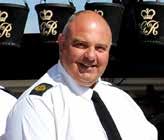
“His desire to help and support those around him never faltered and his positive influence will endure within every staff, whether civilian or military and personnel assigned to the Royal Navy Recovery Centre Hasler. It was a privilege to serve alongside him – he will be missed.”
A ’wealth of issues to discuss at conference Nominate now
THE RN’s Commonwealth Network holds its second annual conference this month, running through the gamut of issues and experiences for personnel drawn from the family of the nations.
The day-long get-together in the Channel Dash conference room at RNAS Yeovilton on October 4 will feature presentations from naval charities, Commonwealth
personnel outlining the ‘lived experience’ of serving in the Royal Navy of 2022, guest speakers and a 90-minute workshop focusing on empowerment and the benefits of networking.
Buses have been laid on from the three main naval bases to help personnel from across the UK attend.
YOU have until October 14 to nominate the best individual or team – military, civilian contractor – for the Team Portsmouth Engineering Awards. Seven categories are up for grabs with the winners revealed at a dinner in Nelson Wardroom on December 1.
Details from/nominations to: maritime.engineering@ baesystems.com.
28 OCTOBER 2022: royalnavy.mod.uk/navynews
PIP PIP HOORAY
FASTER. Greener. More reliable. Ready for tomorrow’s weapons today.
A souped-up HMS Dauntless has returned to Portsmouth after three months testing her new engines to the limit.
The destroyer has undergone extensive trials around the UK throughout the summer, laying the foundations for her five sisters as the entire class of Portsmouth-based Type 45 air defence ships undergo the same upgrade.
The team aboard say the trials have gone better than expected.
The Power Improvement Programme, known as PIP, addresses the reliability of the engines and power generation driving the many hi-tech sensors, systems and weapons on board the destroyer.

The upgrade has seen holes cut in the side of the ship to remove two original diesel engines and replace them with three more reliable, more powerful, cleaner generators.
In addition a storeroom has been converted into a high-voltage switchboard to deal with the extra five megawatts of electrical power generated.
It not only gives Dauntless a boost – she easily clocks up speeds over 30 knots – but could also power the technologies of tomorrow, such as high
energy weapons, already under development for the Royal Navy in UK labs.
Commander Ben Power, Dauntless’ aptly-named Commanding Officer, is delighted with the upgrade, the trials and the efforts of his ship’s company to push the destroyer to the limit and blaze a trail for the rest of the class.
“It has been a long time coming, but getting back to sea felt fantastic,” he said.
“My ship’s company have been fullymotivated to get the ship back to the front-line as quickly as possible.
“But it’s important we do this right: we’ve tested PIP robustly to ensure it works correctly. We have a duty to the rest of the Type 45 class to be thorough so we remain at the forefront of air defence operations.”
He continued: “The real bonus of PIP is the extra flexibility and the extra five megawatts of power. That ‘future proofs’ the class for the next 20 to 30 years and allows us to embark and integrate future weapon systems – and that can only enhance the lethality of the Type 45 destroyer.”
The PIP has been led by BAE Systems, who built the class between 2002 and 2013, with the complex removal/installation of engines carried
out jointly by civilian and Royal Navy engineers at Cammell Laird in Birkenhead.
Dauntless’ team of marine engineers say working side-by-side with their civilian counterparts has been crucial to the success of the programme so far.
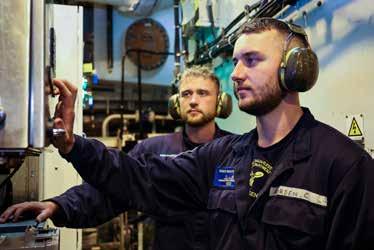
The civilians know the new engines, but not necessarily about warships and the rigours of operating such machinery at sea… while Dauntless’ team are dab hands at the latter they have been supported by industry to understand how to operate the new engines safely and effectively.

At sea the two have been tweaking both the software and hardware to get the most out of the enhanced power plant. “The indications so far is that PIP has made Dauntless more powerful, more resilient and it delivers more than what it set out to do,” said Lieutenant Commander Amy Glover, Dauntless’ Marine Engineer Officer.
Jon Pearson, Warship Support Director at BAE Systems which is overseeing the project, added: “We are delighted to see HMS Dauntless return to Portsmouth after a successful set of sea trials following her Power Improvement Programme
upgrade.
“I am very proud of our teams, our programme partners and the MoD teams who have worked incredibly hard to deliver a highly complex and challenging project to improve the resilience of the Type 45 Class.
“We understand the important role of these ships, and are committed to completing the Type 45 PIP upgrades to the fleet programme and returning more resilient ships back to the fleet.”
Now back in Portsmouth, Dauntless is undergoing a spot of maintenance in dry dock plus systems upgrades for the rest of the year to ensure she remains at the cutting-edge of naval/air defence operations.
Trials, training and assessment by FOST will follow in the spring, with the ship fully operational again and ready to deploy worldwide – chiefly as part of the defensive ring of steel around a Queen Elizabeth-class carrier task group – from next summer.
HMS Daring, the first ship in the class, is being PIP-ed at Cammell Laird while HMS Dragon is receiving her new engines as part of a broader refit with BAE in Portsmouth.

29OCTOBER 2022 :royalnavy.mod.uk/navynews
Pictures: LPhot Belinda Alker
David’s numerical dexterity recognised
AFTER more than a quarter of a century overseeing the financial affairs of the City of Glasgow branch of the RNA, David Carlin can finally stop counting.
S/m David (pictured centre) has been treasurer since he helped form the branch back in 1996, but ill health has forced him to step down – although he insists upon attending the monthly meetings.
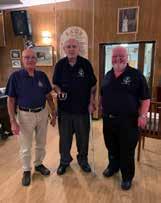
Acknowledging David’s 26 years of dedicated bookkeeping, branch vice chairman s/m Alec Thomas presented him with a small reminder of his time as treasurer: a bottle of Tippex mounted with a plaque thanking him for his service.
And branch chairman s/m Ken McKinnon presented him with a gold watch for his diligence throughout his tenure as treasurer.
Wanted: Your views on LGBT ban
The LGBT Veterans Review is assessing the impact of the pre-2000 ban on homosexuality upon the UK’s Armed Forces.
It’s helping the review team get as many responses as possible, from LGBT veterans to family members of veterans, and organisations affected by or dealing with the impact of the ban.
It is casting its net back to 1967 – when homosexuality was legalised in the UK –until 2000, when the ban on homosexuals serving in the military was lifted.
Survey organisers –https://smartsurvey.co.uk/s/ LGBTVeteransReview – also want to hear from non LGBT about the ban and its impact, especially those involved in implementing and enforcing the ban - military police, medical personnel and legal officials.
Standards laid up
THE magnificent Victorian surroundings of St George’s Parish Church in Stockport are the fitting resting place for the standards of two associations passing into history.
The Manchester branches of the Fleet Air Arm and HMS Glory (representing the light Fleet Carrier) Associations have both decided to call it a day after decades of keeping the flame alive.
The standards of both were blessed then laid up at St George’s as they were transfered into the custody of the two associations’ padre, Reverend Canon, Elaine Chegwin Hall.
Pompey’s field gun runners honoured
DID you serve with Portsmouth Field Gun Crew in the legendary run at the Royal Tournament? If you did, you can mark that service with a commemorative medal produced not-forprofit.
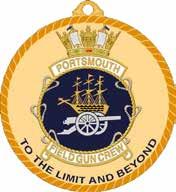
The Portsmouth Field Gun Crew Lifetime Medal was cast following a reunion in July this year to commemorate the Queen’s Platinum Jubilee, made available to ex-gunners (the last run was in 1999).
It’s the brainchild of Terry Crossley, who was taken to Olympia in 1949 to watch that year’s Royal Tournament and was transfixed by the gun run.
Twelve years later he achieved his boyhood dream and marched out for Portsmouth Command, and again in 1964, with
the event now moved to Earls Court.
“From the day we took the test to be a field gunner and were accepted into this unique club, our lives have always been enhanced by our love of field gunning,” says Terry, from Edinburgh.
“Throughout our life and even today we enjoy the comradeship, company and the esprit de corps of fellow field gunner – being a field gunner has been part of our lives and always will be, that’s why we call it the ‘lifetime medal’.”
The medal, 90mm in diameter, features the Portsmouth Field Gun Association badge with a gold background on the obverse while the reverse will be engraved with the runner’s name and the year(s) they ran for Portsmouth Command.
So far it has attracted interest from as far afield as New Zealand and Australia.
For further details, contact terry@
Letters open eyes to dad’s nine lives
THE pandemic lockdown back in March 2020 left many stuck, even trapped, in their homes, searching for something to do.
Jeremy Stoke chose to open the family archive – boxes carefully stored by his mother Doreen for more than seven decades.
They proved to be a figurative goldmine of not just family history, but of service in the Royal Navy in WW2.
Jeremy’s father Michael ‘Mick’ Stoke died more than 30 years ago, but in the boxes he found documents, papers and letters which brought a youthful Mick, a paymaster (today logistics officer) back to life.
Indeed so voluminous did the family archive prove to be the more he looked – private letters, official papers, newspaper cuttings, photographs – that Jeremy decided that his father’s story deserved a much wider audience than the Stoke family.
The result is a 260-page biography of his father’s remarkable naval service: More Lives Than a Ship’s Cat – the Most Highly Decorated Midshipman in the Second World War, G A (Mick) Stoke (Pen and Sword, £25), so named because of the officer’s many scrapes with death.

It’s not merely a personal tribute to a much-loved father, but a snapshot of a man typical of the greatest generation who ensured victory over Fascism and of the demands and challenges placed on the RN in WW2.
Mick Stoke arrived at BRNC aged 19 in January 1940… and just four months later had joined his first ship, new cruiser HMS Glasgow which was subsequently dispatched to the Mediterranean when war broke out with Italy.
There – as Mick Stoke succinctly put it – Glasgow ‘stopped’ (aka was hit by) two torpedoes. “We had quite a juicy fire or two and water pouring in, but good leadership and hard
work soon saw us through,” he wrote to his parents.
While Glasgow was repaired, the young officer was sent ashore to join British forces in North Africa, serving in the flotilla which supplied key ports such as Tobruk, where Stoke was based… and from the spring of 1941, besieged.
Given the port’s plight, the teenage midshipman was remarkably upbeat through much of the encirclement.

His actions in Tobruk would earn him the title of the Navy’s most decorated midshipman: firstly a Mention in Dispatches for rescuing crews of damaged/ sinking ships when the harbour was bombed, then the Distinguished Service Cross for putting out a fire in an ammunition dump.
“It was quite a small matter,” he assured his parents. “All I did was stand on the dump and pass down boxes which were then put out by sand. Of course, there was a lot of exploding and the bombs were falling around.”
Such dismissal of the dangers Mick Stoke faced is commonplace in his writings. He spent pretty much the entire war in harm’s way, received the MBE for further bravery rescuing sailors under air attack in Bone, North Africa, survived the loss of HMS Hardy, lost on the Arctic run in January 1944, supported the D-Day landings (Juno beach) and was sent to the Pacific as captain’s secretary of the escort carrier HMS Rajah during the closing months of the war against Japan, but fortunately saw no action there.
For his troubles, by mid-1945 he was earning 16/6d (82½p) a day as a lieutenant, an extra 3/6d for serving at sea, the ‘Japanese Campaign Pay’, and ‘Climate Pay’ (no air conditioning in HM ships in 1945…) all of which was taxed, and 4 shillings daily married pay which wasn’t.
Described as an outstanding
officer in reports, he perhaps would have gone on to forge an impressive career in the Cold War Royal Navy… but wartime injuries caught up with him.
Instead, having been invalided out of the Service in 1947, Mick Stoke became one of the leading lights in British industry, heading several companies in fields as varied as food and electronics. He advised the UK government’s enterprise scheme and served as
a non-executive director of the Bank of England.
He somehow found time to enjoy his passions of classical music – he was an excellent pianist and loved attended Glyndebourne – and sailing.
Proceeds of the book when bought directly from its author (pictured above signing copies of the biography) via www. stokebooks.co.uk go to support the people of Ukraine.

VC relative inspires AB Liam
THE unparalleled bravery of a long-dead relative have inspired Manchester teenager Liam Tobin to a career of serving his nation in the Royal Navy.

105 years after his great-greatgreat grandfather earned the nation’s highest military honour for saving the lives of fellow soldiers on the Western Front, Liam is about to take his place on the front line.
His forebear Ernest Sykes, originally from Mossley in Manchester, originally worked as a platelayer for the London and North-Western Railway.
When war broke out in 1914, he volunteered and was sent to Gallipoli with 7 Battalion Duke of Wellington’s (West Riding) Regiment, where he was seriously wounded.
After he recovered, he re-enlisted, this time with the Northumberland Fusiliers and in 1917 was sent to France.

In fighting near Arras that April Private Ernest Sykes ran the gauntlet of German rifle and machine-gun fire to cross noman’s land four times to rescue injured comrades and bring them back to safety.
On the fifth occasion, he stayed with the men too injured to move, bandaging their wounds and comforting them as bullets whistled all around him.
For these acts of outstanding bravery, the 32-year-old was awarded the Victoria Cross by King George V on July 21 1917. He survived the war, returned to his job on the railways and brought up a family but served again when his country went to war once more, joining the Home Guard during WW2. He died in August 1949 aged 64.
Liam grew up with relatives recounting the story of his great-great-great grandfather’s courage and devotion to duty, deeds which inspired him to join the military.
“I’ve always been told what Ernest did and what he achieved and I thought, if he could do that in the Army, I’d like to do something similar in the Royal Navy,” he said.
Liam is coming to the end of his specialist training as an above-water warfare operator at HMS Collingwood with a view to serving in Portsmouthbased Type 45 destroyers once complete.
30 OCTOBER 2022:
royalnavy.mod.uk/navynews
Bell brought out for Repulse’s Jim
REUNITED with one of the icons of his ship more than 80 years after he last saw it is HMS Repulse survivor James ‘Jim’ Wren.
The battle-cruiser’s bell – recovered from the seabed of the South China Sea to prevent it falling into the hands of trophy hunters – was brought out especially for the former Royal Marine when he visited the National Museum of the Royal Navy in Portsmouth.
At the age of 102, Jim is one of just two men left to survive the sinking of Repulse and Prince of Wales in December 1941.

The two capital ships – a revamped WW1 battle-cruiser and the Royal Navy’s newest battleship – formed the kernel of Force Z, dispatched to the Pacific as a deterrence against Japanese aggression.
The gamble failed and when Japanese forces landed on the Malay peninsula, the ships were ordered to sail from Singapore to restore order.
On December 10, the force was sighted by Japanese aircraft and attacked. In little more than two hours, after a valiant fight without air cover, Prince of Wales followed Repulse to the bottom of the sea. Some 840 men were lost.
The wrecks remain a site of pilgrimage for RN warships when in the area, and the anniversary is marked by today’s Prince of Wales, the new aircraft carrier, as well as the Force Z Association, who have an impressive monument at the National Arboretum in Staffordshire.
It was the 80th anniversary of the tragedy last December – and the exhibition the museum put on to mark it prompted the marine to pay a visit.
Jim was more than happy to share his experience of the sinking and the rest of the war, which was regrettably spent in appalling conditions in a Japanese prisoner of war camp.
On his time aboard the battle-cruiser, Jim – who also served in the North Atlantic on convoy runs and took part in the Bismarck chase – said: “After final training at Stonehouse barracks in Plymouth I was assigned to HMS Repulse... She was a wonderful ship, with a wonderful captain, he was a real gentleman.”
The ‘real gentleman’ was Captain Bill Tennant, one of the architects of the Dunkirk evacuation. Like Jim he survived the sinking, but unlike Jim he subsequently returned to the UK.
Will Heppa, curator at the National Museum of the Royal Navy, said the WW2 veteran left the team with vivid memories of his service and subsequent capture.

“He also spoke lucidly and candidly about his experiences of the sinking and his internment in Sumatra after the fall of Singapore in February 1942. It was a particularly sobering experience to meet Jim and hear his stories and it is one which I will find difficult to forget,” Will added.
“As well as seeing one of the bells excavated from Repulse which we hold in the stores, Jim enjoyed showing his family HMS Victory and the dockyard where he worked for several years after the war.”
Jim’s story also evidently caught the attention of the Prince of Wales, who had a portrait of the marine commissioned.
H4H tackles suicide
HELP for Heroes is providing suicide awareness training to help the nation’s military veterans after a shock poll found one in three had considered taking their own lives.
The charity commissioned pollsters YouGov to gauge sentiment among veterans.
Beyond reporting back that one in three veterans have felt suicidal on occasions, the survey found that they were more like to turn to family or friends than trained professional… even though more than half the UK populace wouldn’t know how to help someone struggling with suicidal thoughts.
As a result, H4H has has developed a free 30-minute online
‘Suicide Awareness Training course’ in partnership with Zero Suicide Alliance. See www.helpforheroes.org.uk/get-help/mental-healthand-wellbeing/suicide-awareness/ for details.
Training is available to anyone and should give those who receive it the confidence to open up the conversation, read between the lines of what veterans are really thinking, and point them towards the help available in the hope of preventing another life lost.
A Great life remembered
ONE of the last living links with the legendary Great Escape has been cut with the death of naval aviator Captain Vyvyan Howard aged 102.
In the spring of 1944 the then sub lieutenant used his knowledge of German to distract and disorientate the guards as Stalag Luft III camp for captured airmen – allowing many of his fellow inmates to break out.
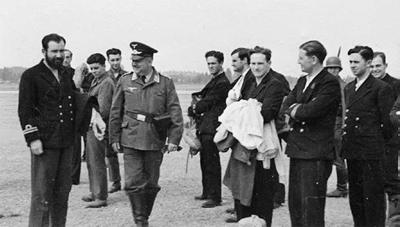
He didn’t escape – and thus was spared the bitter fate of many PoWs who did… and were subsequently murdered by the German authorities.
Even among those of the greatest generation, Vyvyan Howard’s career and life are remarkable.
After working as a research assistant in the chemical industry, he volunteered to join the Royal Navy as a pilot aged 19 when war broke out in 1939.
Two years later, a then Sub Lieutenant Howard was taken prisoner following a carrier raid on the Arctic strongpoint of Kirkenes at the end of July 1941 when aircraft from HMS Furious and Victorious struck at the Norwegian port (he’s pictured below centre, back, clutching his lifejacket).
Occupied by the Germans in 1940, Kirkenes was a key base sustaining their advance on the Russian naval base at Murmansk the following summer.
Vyvyan Howard’s Albacore released its torpedo… only to be shot up by flak and disintegrating on the run home. The pilot was plucked out of a fjord by the Germans and spent the rest of the war in captivity.
He survived the ‘death marches’ towards the war’s end, when prison camps in eastern Germany were emptied as the Red Army advanced and their inmates
marched west in the depths of winter with minimal provisions and unforgiving treatment from guards.
He ended up in a camp in Germany where he was liberated a few days before war in Europe ended.
Rather than return to civilian life, the young aviator was offered a full-time commission in the postwar Royal Navy.
After several years at the new air station at Culdrose, he was given command of 830 NAS and its Westland Wyvern propeller-driven strike aircraft which saw action at Suez.
The skies over the canal zone were, he remembered, “like Piccadilly Circus” while the presence of Egyptian Russianbuilt MiG jets made for “an exciting time”. His actions during the 1956 operation earned him the Distinguished Service Cross.
After another stint at Culdrose and as the Fleet Aviation Officer in Singapore, his naval career ended as Naval Attaché in West Germany.
He spent his final years in a retirement home in Banbury, Oxfordshire.
Ex-commando turns top cop
THERE’S a new sheriff in town… and he’s a green beret.
For the first time, the Royal Navy has a Provost Marshal who has come through the ranks of the Royal Marines – Commander Andrew Williams (pictured left, shaking hands on Victory with his predecessor Commander Dean Oakey).
The latter has handed over the baton after three years as ‘top cop’ – the full title is Provost Marshal of the Royal Navy Police.

Commander Williams joined the Royal Marines in 1988 and spent nearly a decade as a regular with the Corps (45 and 40 Commandos) before joining the Royal Marines Police in 1997.
He moved across to the RN Police in 2010 and has served as its Deputy Provost Marshal (Navy) for the past five years.
“I feel deeply honoured to have been selected as Provost Marshal (Navy) and the professional head of the Royal Navy Police. It is an absolute privilege to be afforded the opportunity to command and work with such talented and professional individuals.
“We will continue to mobilise and deliver support to RN operations and grow our capabilities to ensure the specialisation remains an inclusive, modern, and progressive policing organisation, worthy of the recognition that it deserves.”
The men and women under his direction support ships and shore establishments, preventing crime and investigating when it occurs, and advise on security and close protection matters pertinent to the day-to-day workings of the modern Royal Navy at home and around the globe.
And thank you, George
AND another living link with our greatest generation has been cut with the passing of 100-year-old George Drewett, veteran of not one but three wars.
From the mighty battleship HMS Nelson to destroyers on convoy duty and minesweepers, George served his nation from the 1930s through to the 1950s, then dedicated much of his civilian life to ensuring people remembered the sacrifices his shipmates made.
Born in 1921, George trained at HMS St Vincent and then veteran battleship Iron Duke, before joining HMS Nelson in 1939 where he served as a boy messenger to Admiral Sir Charles Forbes, commanding the Home Fleet.
After the battleship was knocked out of action when she struck a mine, George was transferred to destroyers – in time he would become president of the 1st Destroyer Flotilla – joining HMS Brocklesby in Liverpool protecting coastal convoys from the Mersey around Milford Haven to Portsmouth and the Channel.
Later, he switched to mine warfare, serving in the Mediterranean aboard HMS Aldenham – helping to salvage
HMS Eridge by towing her into Alexandria – and in HMS Boston which was supporting Eighth Army as it drove Rommel out of Egypt, clearing mines along the North African coast.
His ship was first on the scene when HMS Cromer blew up off the Egyptian fortress of Mersa Matruh and helped fish survivors out of the Mediterranean.
George remained in the reserve after the war and was called up again for both Korea and the Suez Crisis.
In civvy street, George tried his hand at farm labouring, then joined the NSPCC as an inspector in London, before settling for a life of school caretaking.
A compassionate and humble man, as president of the 1st Destroyer Flotilla he was a regular correspondent to Navy News, highlighting the wartime role of the destroyer fraternity and the work of the Sea Cadets.
Winifred, his wife of more than 76 years, passed away in January. The couple, who lived in Shepperton, Middlesex, leave behind 14 grandchildren, 14 great-grandchildren and two great-greatgrandchildren.
Merchantmen honoured by Wansbeck
MEMBERS of Wansbeck and District RNA attended a Red Ensign Day event in the village of Lynemouth in Northumberland.

The flag was raised in memory and honour of those from the village – and surrounding areas – who served in the Merchant Navy and gave their lives during the two world wars to keep the nation’s supply lines open.
It’s the first time in three years the event, organised by Parish Councillor Liz Dunn and committee members, could be held due to the coronavirus pandemic.
The flag was raised this year at the Memorial Hall, by a young Sea Cadet from TS Tenacity in Ashington.
Four cadets, plus three petty officers, a wren, and the person in charge from Tenacity, Michelle Tait, joined villagers, RNA branch chairman Ian Robson, and secretary, Derek Wilkinson, and one other branch member during the service of thanksgiving..
Tea and coffee were enjoyed afterwards at the newlyrefurbished community centre.
31OCTOBER 2022 :royalnavy.mod.uk/navynews
Capt Howard pores over newspaper cuttings of his time at Culdrose during his visit to the air station in 2013
Veteran talks to Whitstable cadets as part of Falklands project
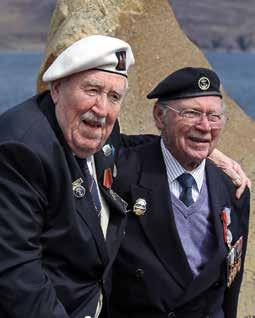
WHITSTABLE Sea Cadets have completed a detailed project to mark the 40th anniversary of the Falklands Conflict.
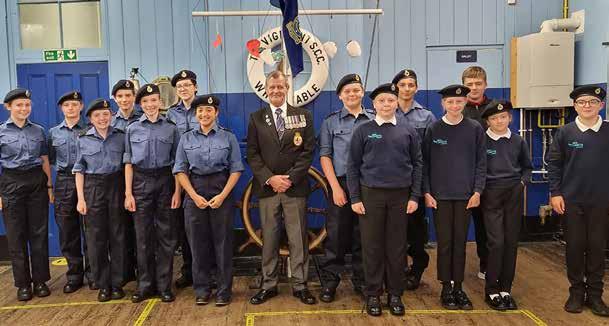
Noting that the seaside town is exactly 7,946 miles from the Falklands, the cadets researched the events of 1982, and recorded key events for their records.
Cadets from the TS Vigilant unit decided to commemorate the lives lost during the conflict by walking 40 miles between them.
The Junior Sea Cadet division, which comprises ten to 12 year olds, chose the route and 15 cadets and staff walked a total of 4.5 miles each, totalling just over 68 miles.
After the main walk three more cadets, who were unable to make it on the night, completed their route. In total Whitstable Sea Cadet completed 4.561 miles each, totalling 82.098 miles in total, smashing their original goal.
This year the cadets also had the privilege of speaking to Falklands veteran Lt Fenn, pictured right with the cadets.
The deputy district sea cadet officer spoke to
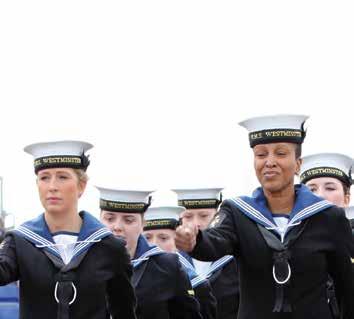
the cadets about his Royal Navy career and his time in the Falklands.
He spoke about how his ship was reported sunk and the desperate calls home to assure his mum and dad that everyone was fine.
Cadets got to hold ashtrays Lt Fenn had made from casings and look at photographs taken during his time in the South Atlantic.
TS Vigilant’s Commanding Officer, Lt (SCC) RNR Sharon Robbins, said: “We are very glad he came to see the cadets and that his ship made it home.
“I am very proud of the work my cadets have done; I am always proud of them and everything they do.”
The project was compiled by: Junior Sea Cadet Grant, Junior Sea Cadet, Jones, Junior Sea Cadet Lee, Junior Sea Cadet McCalpine-Patching, Cadet Mariuba, Cadet Charlton. S, Cadet Charlton. B, Cadet O Foweraker, Cadet 1st Class Ross, Cadet 1st Class Ricketts, Cadet 1st Class Prince, Cadet 1st Class Farrell, New Entry Jones and Ordinary Cadet Rawlings.
On the Water makes big splash
inspirational hours.”
More than 500 sailing and paddlesports taster certificates were also awarded to the participants.
“I loved it,” said young participant Fiona, nine, who took part in this year’s programme in Merseyside.
“I learnt a lot and I will be coming back next year!” was the feedback from another young participant, Molly, 11.
Parents have been equally enthusiastic about the programme. One parent said: “I could not afford to take my child to do activities like this in the holidays so I am very grateful to Sea Cadets for giving my children this opportunity.”
Regatta medal haul for Holyrood and Burnham-on-Sea cadets
Burnham.
A pair of cadets from Burnham-On-Sea and Highbridge Unit achieved gold and silver medals in the regatta.
Two of the unit’s area champions, Able Cadet Oliver (15) and cadet Felicity (13) were pitted against the best cadets from six other areas in the solo canoe and tandem canoe events. It was the first time that either cadet had experienced the ‘pressure cauldron’ of a national event.
Both AC Oliver and Cdt Felicity earned silver medals in their solo competitions. In the mixed tandem event, they kept their cool and concentration to go on and win their gold medals.
MORE than 1,400 disadvantaged and vulnerable young people across the country have enjoyed their first taste of sailing, rowing and paddlesports this summer thanks to On The Water, an outreach programme run by Sea Cadets.

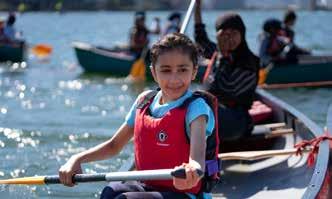
Delivered across London, Birmingham and Merseyside, Sea Cadets delivered 8,000 sessions across its three national boat stations (Royal Docks, Midlands and Crosby) to children whose faiths, family incomes, educational needs, or disabilities mean they’re usually excluded from such opportunities.
Among the groups hosted were children refugees and asylum seekers from war-torn countries, including a group of Ukrainian children.
“We wanted to give young people who wouldn’t normally afford and have access to waterbased activities a chance to
have some nautical adventure and fun,” says On The Water Coordinator, Ryan Bentley.
“The aim of the programme is to boost the young people’s confidence, get them to enjoy some fresh air and exercise, make new friends and try something new.”
Qualified instructors delivered all sessions on a wide range of water sports.
“I was particularly proud that after presenting over 90 qualifications last year [in Royal Yachting Association Stage 1 or British Canoeing Paddle Discover Award], we more than doubled that to 200 this year,” said Marine Society & Sea Cadets chief executive, Martin Coles.
“Once again, we were able to include so many deserving young people – including looked after children and young carers – who were able to forget their difficult situations for a few
Another parent told us: “My son has autism and I was very sceptical about allowing him to go onto the water without me being there however, I was assured that the Sea Cadets were aware of his needs.
“I am so thankful to them for giving my child this opportunity as I still can’t believe he’s done it.
“Seeing the pictures of him sailing made me so proud. The work Sea Cadets does is amazing!”
SIX cadets from Holywood-based TS Formidable represented Northern Ireland in London at the recent National Combined Sea Cadets Regatta, where they went on to win gold, silver and bronze medals.

Cadets Ryan, Niamh, Laura, Jodie, James and Eva (pictured above) from TS Formidable in Kinnegar, Holywood, were thrilled to have gained their places in the Northern Ireland team.
“The whole experience was unreal,” said Royal Marines Cadet Niamh.
“I hadn’t paddled before May this year and now I have a qualification in Paddlesports and a gold medal.”
RMC James added: “It was a long journey to the competition but worth it even though I just missed out on a medal. Can’t wait until next year’s competition!”
Cadet Eva said: “I really enjoyed the whole trip and winning gold just topped it off. Now looking forward to my next paddlesports qualification.”
Officer in Charge, WO2 (SCC) George McCutcheon RMR added: “What a great performance by our cadets.
“The unit only returned to training after Covid in April this year, just in time to celebrate our 80th Formation Anniversary.
“None of the cadets had any experience of kayaking. So now they have experienced kayaking, gained paddlesports qualifications and represented Northern Ireland at the ExCel in London. The long hours of hard work has paid off. “
The team’s medal haul couldn’t have come at a better time, with TS Formidable currently celebrating 80 years of being based at the Cadet Training Centre in the east Belfast and Holywood area.
Meanwhile, there was also success for the Cadets from
Our vision is: Sailors and Marines helping Sailors and Marines – now and always.
RNBT provides a helping hand to serving and ex‑serving men and women and their families. Help, opportunity and care in times of need.
We don’t just help you to weather the storm, we try and help you navigate your way out of it.
If you need help or would like to donate or volunteer contact RNBT.
The Royal Naval Benevolent Trust, Castaway House, 311 Twyford Avenue, Portsmouth, Hampshire, PO2 8RN T: 02392 690112 E: rnbt@rnbt.org.uk www.rnbt.org.uk
Their efforts, plus that of their colleagues in the kayak categories, earned them the Admiral Bell Davies Cup, which is given to the overall winner of the cross stream event, and was shared with the southern area cadets.

This year’s course was especially challenging, with several tight turns that demanded great skill and – in the tandem category – excellent communication.
AC Oliver said: “I didn’t know when we started training for this how much effort it would take but holding this trophy makes it all worthwhile.”
Cdt Felicity added: “I’ve not been canoeing very long – around six months – so I didn’t expect to do so well. And on my birthday as well!”
The cadets’ canoe coach and Commanding Officer, Lt (SCC) Dom Gregory RNR, said: “Right at the start of this competition season we had a really high-quality district event and we knew we had to raise our game going forward to Area and Nationals.
“The hardest thing for any paddlesports coach in a competition at any level is to watch your cadets go out and not be able to say or do anything to help.
“However both Able Cadet Oliver and Cadet Felicity trained relentlessly to win their individual silver and tandem gold medals.
“Their communication was excellent and selfbelief crucial in winning the day and helping South West Area do so well. Both cadets kept their rounds simple and clean with minimal penalties and made improvements from their first round during the day. It was nail-biting stuff for those of us supporting.”
32 OCTOBER 2022: royalnavy.mod.uk/navynews
Registered Charity Number 206243 6367 RNBT ad 264x80.indd 1 22/10/2021 16:36
Rescue services day returns
LARGE crowds turned out to take part in Burnham-On-Sea’s Rescue Services Day – the first time it’s been held since 2019, before the pandemic struck.
The various emergency services held a range of displays and demonstrations along the town’s seafront and beach.
The day featured an RNLI demonstration, a Coastguard mud rescue, and a BARB hovercraft exercise as well as other emergency service exercises and a display of rescue vehicles along the beach.
Over 20 different emergency groups took part, including Devon and Somerset Fire Service and Air Ambulance, Avon and Somerset Police, Royal British Legion, Somerset Road Safety, Freewheeler Blood Bikes and Marine Life Rescue
Also in attendance on the day were cadets and volunteers from Burnham and Highbridge Sea Cadets.
Lt (SCC) Dom Gregory RNR, the Commanding Officer of Burnham-on-Sea & Highbridge Sea Cadets said: “It’s been great to get back into the heart of the town and show off some of the amazing things that sea cadets can do.
“The support of the cadets was great and every single one of them got their seamanship fingers out making keyrings, teaching visitors some ropework and learning some fairly complex decorative ropework.”
BARB, the charity that operates Burnham’s rescue hovercrafts, has been organising this popular event since 2004.
Event organiser Roger Flower said: “We are so pleased that the event returned this year for the first time since 2019.
“It has been a great one, with many displays along the seafront and things to see and do. It was a super opportunity to see the work of our local emergency services first hand and support them.”
Picture: Burnham and Highbridge Weekly News
Metro stations host artwork by Hebburn
HEBBURN Sea Cadets have contributed their artwork to mark the 40th anniversary of Tyne and Wear Metro.

The special artworks, in the form of large collages made up of individual tiles created by members of local community groups, have been displayed at three South Tyneside metro stations –Hebburn, Chichester and Bede stations.
“I really liked making the artwork. I’m going to take my guardian to see it,” said one of the cadets that took part in the project. “It’s really fun to know that my picture is going into the Metro stations,” said another cadet while a third added: “I made a picture of the Memories about the Metro I found it really peaceful and enjoyed creating the pictures.”
SLt (SCC) RNR Clare Towns, Commanding Officer of Hebburn Sea Cadets Unit, said: “It’s an essential part of community spirit that Sea cadets get involved in events like this. The community supports us and it is wonderful for our unit to give back to the community. This project gave our cadets the opportunity to have fun with art while thinking about their memories. Two staff members also took part, which was good fun and promoted a bit of healthy competition among them!”
Ballymena Cadets aim for silver
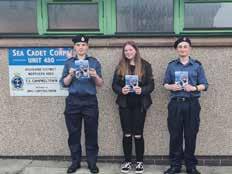
BALLYMENA Sea Cadets had a group of young people undertake their Silver Duke of Edinburgh’s Award (DofE) expedition.
The expedition saw them leave Glenarm on a Friday morning and finish at Slemish Mountain on Sunday afternoon.
The group worked well together, achieving their aim of assessing the levels of degradation along the Ulster Way and Antrim Way which had been caused by human footfall.
Able Cadet Patrick said: “Whilst demanding, the threeday expedition was a worthwhile experience. I learnt a lot in terms of being part of a team, overcoming obstacles, and taking the initiative.”
Campbeltown Cadets on a crest of a wave after training
FOUR young members of the Campbeltown Sea Cadets group are on the crest of a wave after successfully completing Royal Yachting Association (RYA) sailing training.
Cadets Aimee-Leigh, Tyler, Lewis and Milo travelled to the recently-launched Sea Cadets Port Edgar Boat Station in
South Queensferry as part of a Highland District event.
There, they learnt how to rig, launch, steer and recover a sailing dinghy under the guidance of RYA-qualified Sea Cadets instructors.
This was the first course of this kind that the four cadets have taken part in as well as
Junior summer camp back with a bang
SEA Cadets’ National Junior Summer Camp took place in August in Doncaster, welcoming some 600 junior cadets through its doors.
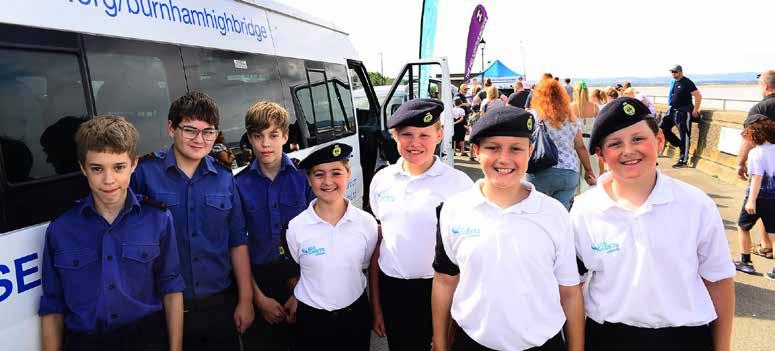
Cadets from 223 units across the country enjoyed an adventure-packed experience which included abseiling, archery, bushcraft, fencing, nature trails, campfires, pond
the first course that cadets from Campbeltown have attended since before the pandemic.
“The training was a great way to get out and meet other cadets as well as get some sailing experience and qualifications,” said Cadet Tyler.
All four cadets passed their first stage on the RYA Youth Sailing scheme.
They are looking forward
dipping and zip wire.
The annual summer camp, run for more than 10 years, offers children aged 10-12 the chance to learn new skills, make new friends and learn about teamwork.
LtCdr (SCC) Victoria Marson RNR NSO Juniors said: “With the aid of our dedicated Cadet Force Adult Volunteers, our
to getting out sailing next year with the unit as well as attending more Sea Cadets courses.
Commanding Officer of Campbeltown Unit, PO (SCC) Alasdair MacPhail was pleased with how the training went.
“This was a fantastic opportunity for our cadets to put into practice the skills they have learnt at the unit,” he said.
juniors experienced a week based around looking out for each other, stepping outside their comfort zones, taking on new challenges and learning new life skills that they can carry forward to help them grow and develop.”
More than 2,250 sea cadets were able to participate in summer camps this year.
“For the four cadets that attended the District sailing weekend, this was their first taste of the cadet experience outside their unit and come back with their Royal Yachting Association Youth Sailing Scheme Level 1 to put into practice.
“The cadets enjoyed their time at Port Edgar so much that they are already asking when they can go back again.”
The project is a partnership with Metro’s operator, Nexus and delivered by The Cultural Spring, working with County Durham artist Laura Brenchley. Laura asked people to think about what the Metro meant to them and their memories of the service to create artworks made using everyday materials. It was funded by Arts Council England, as part of the big Metro Takeover project marking 40 years of the service.
The Cultural Spring’s Project Director, Emma Horsman, said: “Our Metro 40 project was a lovely one to work on with local community groups, and I think the results will be enjoyed by Metro passengers for years to come. ”The Metro 40 Takeover saw new life brought to the system through dance, song, music and visual arts projects, involving major regional arts organisations including Sunderland Culture, Dance City and The Cultural Spring.
SEA CADETS MOURN THE LOSS OF THEIR PATRON
MARINE Society & Sea Cadets (MSSC) is deeply saddened by the loss of Her Majesty the Queen, who was Patron of the charity since 1952.
The Chair of MSSC, Jeremy Penn, wrote a letter to express condolences and sympathy to HM King Charles III on behalf of the charity.
“It is with the greatest sadness and regret that I convey my sincerest condolences on the grievous loss of Her Majesty The Queen,” Mr Penn writes.
“We have been indebted to Her Majesty’s gracious patronage of our charity throughout her reign.”
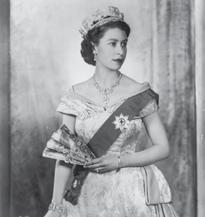
“During this Platinum Jubilee year we have, like so many around the world, recognised Her Majesty’s outstanding service to our country.
“Throughout her reign, we were humbled by Her Majesty’s deep interest in our progress towards the development of young people and seafarers.”
“Her regular messages of encouragement were hugely appreciated by our thousands of volunteers, while many of our cadets were recently touched to receive letters of gratitude in response to their Jubilee well-wishes.
“Sea cadets, volunteers and staff around the UK will remember Her Majesty with the greatest
affection.”
Ensigns across Sea Cadets were flown at halfmast with the charity preparing for participation in remembrance events, including Her Majesty’s funeral procession.
Our thoughts and condolences are with The Princess Royal, Admiral of the Sea Cadet Corps, and the entire Royal Family.
Among the occasions where HM the Queen attended the charity’s events include the 250th anniversary of Marine Society in 2006 at HMS Albion, Greenwich. The charity has a long history of royal patronage, with Queen Victoria becoming Sea Cadets’ first Patron in 1899.
33OCTOBER 2022 :royalnavy.mod.uk/navynews
Sea Scouts flourishing
DURING World War I, Sea Scouts performed duties as coastal lookouts and messengers, aiding a thinly stretched Royal Navy at that time.
In recognition of these deeds, the Sea Scouts were formally recognised by the Admiralty Board in 1919, this allowed them access to Naval equipment and facilities whilst remaining independent of any Naval control.
2SL holds the authority from the Admiralty to superintend the RN Sea Scout Partnership scheme, through the execution of a Memorandum of Agreement (MoA).
The organisation and execution of the RN Sea Scout Partnership scheme through the MoA is delegated through Director Strategy and Policy to NRC NE (Cdre Phil Waterhouse RN ADC) and is delivered by his RN Cadets and Youth Team.
Today there are 104 RN Recognised Sea Scout Units nationally, with around 5,000 Sea Scouts and around 1,200 Adult Volunteers.

Concessions and privileges of the scheme are access to the Defence Estate for Scout Camps, ship visits, accommodation, use of boats and equipment issued to RN Cadet Forces. They are viewed, by the RN, as equals alongside their RN Cadet Forces cousins.
The RN provides modest support to the RN Sea Scout Partnership scheme for the purchase of boats, equipment, national governing body awards to develop and support Sea Scout afloat training, all in the pursuit of raising Maritime Domain Awareness.
Future Navy News editions will focus on the recognised groups who have benefitted from this scheme and badge sponsorship initiatives the RN has with The Scout Association.
Festival of the Sea celebration
Selly Oak cadets rules waves with day at sea
NINE Combined Cadet Force (RN) Cadets recently took part in an Offshore Sailing expedition with the Tall Ships Youth Trust along the south coast of the UK on one of their 72ft racing yachts.
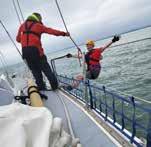
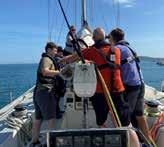
SLt H Morrissy writes:
We travelled to Portsmouth where we boarded Tall Ships Challenger Yacht 1. During our 5-day sailing expedition the Cadets were responsible for all aspects of onboard living and travelling.
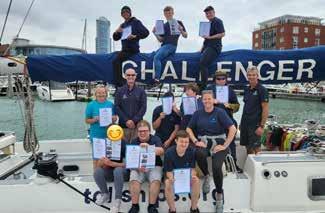
They worked in two watches to complete the different tasks. The expedition was a mental and physical challenge unlike anything our Cadets had ever experienced before.
They had to cope with learning the skills needed to operate a yacht such as deck preparation, engine checks, halyard rigging and sail hoisting. As well as this, they had to work cohesively as a team below deck to ensure that our restricted accommodation was kept clean and that we were all well-fed and full of energy by cooking our meals.
The majority of the Cadets enjoyed helming (steering the ship) the most. They challenged themselves by working as a team to sweat themselves up to the top of the 96 foot sail.
Their effort was amazing and they all developed their sailing and interpersonal skills as a result. They took on responsibility as individuals and team members to demonstrate learning and, in some cases mastery, of sailing skills. I was proud to be accompanying them.
The expedition evidently developed resilience, self-esteem and independence within Cadets as they completed each task with enthusiasm, self-motivation and newly found confidence.
I was able to witness them volunteer for tasks and share with others what they had learned in order to become an efficient team. Most of the Cadets have additional needs of moderate learning difficulties, Autism or communication needs so it was inspiring to see them communicate with others and strangers in a new and unfamiliar environment.
Our school location is an inner-city school so, for some of the Cadets, it will be one of very few - if not the only - holidays or adventures they participate in during their lifetime.
One of the CCF cadets said: “I’ve loved learning about how the yacht can work from the skipper. He has answered all of my questions and helped me to be able to raise the sails by using the halyards and the winches. I would
Six pass their wings at RNAS Yeovilton
THE Cadet Naval Aviation team led by aviation ‘boss’ S/Lt (SCC) Steve Cook RNR spent a busy week at RNAS Yeovilton during one of the hottest periods of weather this year.
Despite the heat affecting operations all six cadets were able to fly thanks to the efforts of 727 NAS commanding officer Lt/Cdr Adam Jones RN and his team.
Four cadets from the SCC and two from the CCF spent the week revising their navigation skills and fitting in visits to the defence fire and rescue station where they were able to try out all the latest equipment and see demonstrations of the new fire tenders.
They spent time with the air traffic controllers in the tower where the staff showed the course just how the airfield operated.
Visits to various squadrons were also arranged allowing the cadets to see the helicopter force close up with all the staff taking time out to show everyone around and answer all their questions.
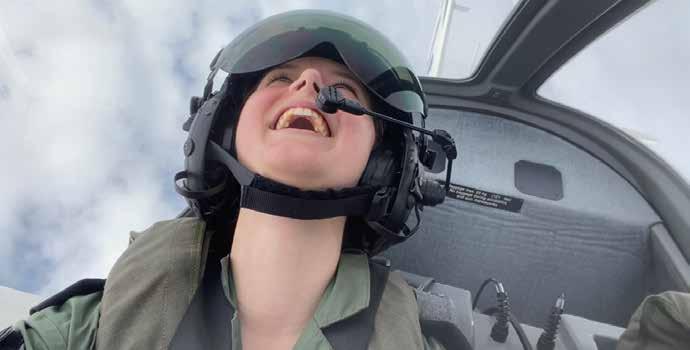
The CNAC team were pleased to welcome Captain Sea Cadets Neil Downing RD RN who Joined the course later in the week.
He spent a good deal of time talking to the cadets was impressed by the content of the course and the enthusiasm of all the cadets attending.
Everyone worked hard during the week and all the cadets were very happy to hear they had all gained ‘Silver Wings’ passed which were presented to them by the captain.
like to come back as a volunteer to be able to help other people get this same experience.”
As a unit it highlights and advertises the amazing opportunities and experiences that can be gained from being involved in the CCF and also helps with recruitment. It is also one of the highlights of our CCF calendar.
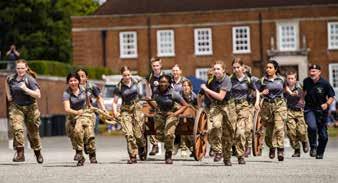
With thanks to the Ulysses Trust for supporting this expedition which will be a stand-out moment that will stick with the participants for the rest of their lives.
The trip was made possible as a result of funding from Ulysses Trust.
Three-day city visit for Wellacre youngsters
WELLACRE’S Combined Cadet Force (CCF) RN Section travelled to Portsmouth for a three night residential stay, accompanied by SSI Ward and SLt Baker.
The cadets first made a visit to the Historic Dockyard, including the National Museum of the Royal Navy museum. They explored one of the most celebrated warships in Britain’s naval history, HMS Victory, followed by HMS Warrior, Britain’s first iron-hulled, armoured battleship.
The next port of call was HMS Excellent, which is home to the Navy Headquarters and front-line training units and based on Whale Island in Portsmouth Harbour.
On the island, they conducted fire fighting training for RN personnel. Cadets took part in a workshop, watching a fire demonstration
before being challenged to use the skills learned to extinguish a fire onboard a training ship.
Cadets also spent time on the facility’s DRIU (Damage Repair Instruction Unit) to experience an emergency damage control drill onboard a ship.

Cadets were dressed in full Service gear and trained to use the equipment, before the special unit was flooded and they were tasked with finding the damage and driving wedges in the hull with hammers.

SLt Baker said: “The trip was an excellent Royal Navy experience and an opportunity for our cadets to expand their naval history knowledge.
“The naval training exercises at HMS
Excellent were an incredible chance for them to experience life on board a ship and they performed brilliantly in the drills using their teamwork and communication skills; they loved the experience.”
Cadet Luke, Year 9, added: “The DRIU was the best part because it gave me a taste of real life in the Navy.
“The fire fighting was good too - we learnt how to fight a fire in a limited space. The whole experience was really exciting!”
Mrs Sharrock, Principal, said: “The students and staff had an amazing time with our cadets demonstrating exemplary behaviour and real resilience in the RN workshops.
“Thank you to the staff for giving up their time for students.”
CADETS showed their leadership and teamwork at the Festival of the Sea.
The Countess of Euston, HM Lord-Lieutenant of Suffolk, invited The Royal Hospital School Holbrook to host a weekend of nautical activities due to their naval heritage and close links to the Royal Navy.
A great day was had by participants and visitors who saw a range of fantastic Armed Forces displays, including Royal Navy Parachute and Royal Marines display teams, the RHS Marching Band, Corps of Drums and Guard and the RHS Navy Field Gun Crews.
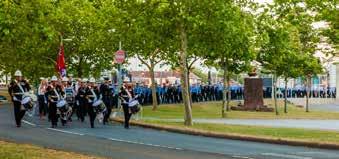
Sea shanty singers entertained the crowds and there were nautical stalls to peruse and activities to take part in, plus a sailing regatta between the Royal Navy and the school.
As ever our Cadets rose to the challenge with a range of activities, developing and demonstrating the power of command, leadership and teamwork.
34 OCTOBER 2022:
royalnavy.mod.uk/navynews
Wes does best in Budapest
ROYAL Navy powerlifter PO Wesley McGuinness achieved a person best at the International Powerlifting Federation (IPF) European Bench Press Championships in Budapest, Hungary.
He managed to achieved three out of three good lifts on the European platform achieving a personal best of 185kg / 407.85lbs Bench Press on his third attempt – the biggest bench press at an IPF major international platform by any member of the Armed Forces.

JUNIOR sailors at Royal Naval Air Station Culdrose in Cornwall have been leaning to fly thanks to generous support from the Fleet Air Arm Officers’ Association.
This year, for the first time, the association agreed to sponsor a pair of five-day gliding courses for ratings with Seahawk Gliding Club.
The first course was held at Predannack Airfield on the Lizard peninsula, close to RNAS Culdrose.
The Monday morning was taken up with safety briefings on the airfield and gliders after which it was straight into deploying the gear to set up the airfield and they were soon up and away on their first auto tow wire launch.
The weather was not great but good enough to give each student a couple of launches. On day two the weather was even worse, but time was not wasted as briefings on the take-off, circuit and landing filled the morning followed by a video on glider performance and competition flying.
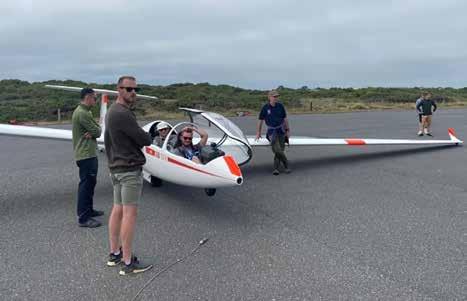
Day three was blessed with clear blue skies which allowed each student two aerotow launches to 2,000 feet to cover the basic upper air work of the syllabus and provide a hint of what it is like to soar the Cornish cliffs on just a breath of sea air from the southwest.
The final two days, in hot sunshine and the wind in the north, were a glider pilots’ stairway to heaven with big cumulus clouds and thermals up to 3,500 feet on which the newly fledged pilots learned to soar and travel cross country for hours at a time. The lift was so strong that coming down was the problem.
Lieutenant Fred Warren-Smith, the course leader, went solo on day four, however, as a Hawk pilot and ex-736 Naval Air Squadron, that was not a surprise.
Leading Air Engineering Technician Sam McInerney was presented with a silver-banded and engraved glass prize for ‘most progress’ by Lieutenant Bob Neill RNVR from the

FAAOA, both are pictured above.
LAET McInerney said: “It was great being able to do something a little different and I will certainly continue flying with the club and hopefully at some point start flying solo.”
Aircraft handler Naval Airman Christan Briffa added: “We all had a blast and I think it’s a great idea. I love the fact the navy has invested in junior rates. The course played a key part in building a good relationship with other team members and building our teamwork skills, which is vital for the Royal Navy output.”
Gliding instructor Chris Bryning said: “They were a great team who worked very well together to get the most out of the week and had fun into the bargain. The second course in the last week of August is, not surprisingly, full but I’m sure that after the success of this week the FAAOA will sponsor similar courses next year so get your bids in early.”
Since the World Championships in Vilnius, Lithuania last year (October) he has increased his bench press by 17.5kg and is now focussing on benching 200kg at the IPF Commonwealth Championships in December in Auckland, New Zealand.
Wes said: “I’m pleased with my progress and strive to improve at each event.
“Since I enrolled on to the Royal Navy’s Elite Athlete Scheme I have really been able to maximise my training and recovery as well as organising grassroots events so I can pass on my wealth of knowledge and experiences to the upcoming sailors to help them become the next ambassadors of sport in the RN.”
Wes has organised a charity funding raising event in October to help support RNRMC. This event is open to all volunteers, he aims to lift a total of 100,000kg within six hours by carrying out all three disciplines of powerlifting: squat, bench press and deadlift.
Visit: Wesley McGuinness is fundraising for Royal Navy and Royal Marines Charity (justgiving.com).



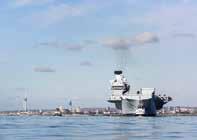


Sailors take to the Cornish skies Riders keep their cool
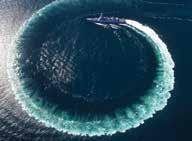
IN THE soaring heat of the British summer RN equestrians were cool customers.
In June at the Army Jumping Championships, hosted by the Defence Animal Training Regiment (DATR) in Melton Mowbray, a small team of four RN riders made their presence felt.

Lt Cdr Nicole Sherriff-Vonk, SLt Katie McManus, SLt Abi Pearce and LH Robyn McFadden not only formed he RN’s InterService Team for the Eventing Leg but were also competing as individuals in other classes during the week.
Three of the riders were on hireling horses provided by Jabeena Maslin Equestrian and LH McFadden travelled her two horses a round trip of 300 miles (by road and ferry) from her home base in Northern Ireland.
The superb DATR facilities include a super grass jumping arena with space that competing in an enclosed arena on a synthetic surface doesn’t allow.
SLt McManus riding ‘Tonka’ was the first rider to make her mark in the Prince of Wales Cup; jumping a foot perfect round at 1.10m to lead the field.
SLt Abi Pearce on ‘Nikki’ was in hot pursuit, but despite an impressive round finished in third.
The following day in the Kings Cup LH Robyn McFadden jumped her Mum’s ‘Pyper’ brilliantly around a tough 1.15m course to
win the trophy and notch up valuable points in the overall Championship League.
They also competed successfully in the Senior Derby resulting in a second-place finish which then cumulatively earned them the prestigious Senior Champion accolade.
During the week the second leg of the Inter-Services Team competition took place.
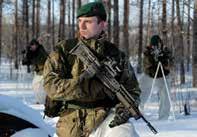
Sponsored by the Worshipful Company of Loriners’ the RN had made a great start in the competition by winning the pure Dressage leg in April and were eager to continue to maintain the pressure in the Eventing leg hosted by the Army.
This consisted of a Dressage Test in the morning followed in the afternoon by a jumping course of fixed rustic fences and portable showjumps against the clock.
The three hirelings were less accustomed to performing in the dressage arena but the riders skilfully navigated through the precise movements to keep the team in contention.
The jumping course was imposing and technical but the team bravely donned their cross-country kit and rode determinedly; acquitting themselves very well to achieve second place in the leg.
Meanwhile RN Dressage riders in other events have been excelling. Commander Suzanne Clark, Lieutenant Commander Jill Monnox and Lieutenant Commander
Victoria Sollitt headed to the Area 12 Summer Dressage Qualifier; the pressure was on in the team event and without a fourth team member, every score would count.
Cdr Clark on her own horse ‘Billy’ faced stiff competition against some established combinations, but were unphased by the pressure.
Lt Cdr Sollitt on her home bred ‘Nelson’ showed great patience and focus during an enforced delay to then still ride a beautiful test.
Lt Cdr Monnox completed the team trio with her horse ‘Sonny’ and despite a challenging preparation due to injury in the run up to the show, they impressed the judge with a dynamic routine. After a tense wait for the overall results the RN were confirmed the winners.
Other successes included seeing Surg SLt India John on the podium in her first Prix St George Dressage outing riding her sister’s horse ‘Ginger’ and Lt Cdr Vicki Sollitt qualifying for the British Dressage Freestyle to Music National final on ‘Nelson’.
The RN Equestrian Association looks forward to hearing from any current or budding riders at any level (with or without their own horses) via royalnavydsje@ gmail.com who are interested in finding out about opportunities to get in the saddle.
0207 407 8658
contact:
35OCTOBER 2022 :royalnavy.mod.uk/navynews A Naval Charity providing personal help and advice for all serving and former members of the Royal Navy, Royal Marines, Royal Fleet Auxiliary, their Reserves and Families on; Civilian Employment & Personal Administration Including - resettlement finances, pensions and commutation, legal and family law matters For further information please
whiteensign.co.uk
office@whiteensign.co.uk Navy News 80 x 254 Marine Green hoirizontal.indd 3 13/05/2021 11:30:44
LH Robyn McFadden and ‘Pyper’
(Photo courtesy of Geoff Marsden)
Duo bid for pool glory
TWO Royal Navy sailors are getting ready to compete in the 8 Ball Pool World Championships.
Petty Officers Grant Black and Leslie ‘Judy’ Punshon, both serving with British Forces Gibraltar, will travel to France for the competition after eight months of qualifying.
In Albi, PO Black, who qualified for the Men’s A team and PO Punshon, who qualified for the seniors’ team, will represent in the team event and the singles and doubles events.
During the tournament running from October 8 to 15, the pair will face professional players, including world champion and world number one Liam Dunster, former World Champions and multiple title winners.

PO Black said: “I’m looking forward to the event, having the opportunity to mix it with some of the top ranked professional players in the world - win or lose, it’ll be an experience I’ll never forget.”
Both Grant and Leslie have a history in cue sports. PO Black competed on the Cue Stars Snooker junior circuit between 2004 and 2010 where he trained with and competed against the likes of Jamie Wilson and Billy Joe Castle, who have since gone on to compete on the pro snooker tour.
PO Punshon reached the quarter-final of the Gibraltar Pool Open in 2004 which was televised on the GBC network.
Captain’s pride as he wins memorial trophy
A DISLOCATED shoulder whilst racing with the Enduro Team over the winter and then a last-minute deployment has meant that Lt Cdr Max Wilmot has not had much time to prepare his bike for his first race of the 2022 season.
Needless to say having not raced since September Max was feeling more than a little rusty, not to mention that he was running a new bike that was built with minimal time available, but thanks to all the sponsors it was ready and looking great for the race weekend at Anglesey.
This weekend is always a highlight of the racing calendar, the drive to north Wales is a long one but always rewarding, on arrival you are presented with the most scenic track there is overlooking the coastline to Snowdonia as well as this weekend being the RNRM Jamie Adam Memorial Race.
Friday was a full day of testing, this was the first time that Max has had to opportunity to ride his bike in anger, the whole day was most definitely needed to dial in the suspension and iron out niggles with gearing and quickshifter, by the end of the day the bike was running well but still needed work.
Saturday was an early start with a team track walk to discuss lines and brake markers as well as taking in the awesome scenery before qualifying and a further two races throughout the day.
With the quickshifter still playing up and the engine
not giving it all at top revs Max qualified further down the grid than he would have liked.
Race one saw Max have a good start gaining a few places off the line, having some close battles throughout the race and finishing mid pack. In race two Max again got a good start but came into Rocket a little fast, dropping down too many gears and losing a few places.
The rest of the race was spent chasing down those lost positions and again finishing mid pack in the same
position as he started.
The weather, whilst sunny, was extremely windy, making high speed corners interesting blowing you off the racing line at every opportunity. At the end of the day race point were totalled up throughout the team for the Jamie Adam trophy.
LET Natalie Cro was on ten points, Max was on 11 and CPO Adam Myhill was on 12 leaving it all to play for the following day.
Sunday was a better day with the bike performing better, Max gained seven places in the third race with some close racing and much the same in the final race.
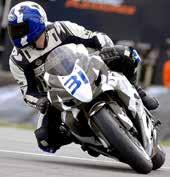
Things became a little more eventful when Max pushed a little too hard and the front wheel let go when coming out of Banking corner, with the weight of the bike pressing his knee into the tarmac Max was able to push down righting the bike and continuing on his final lap, most definitely one of those heart-stopping moments where you only realise what has happened after the event.
The team’s point were totalled up leaving Max in first place for the Jamie Adam Memorial Trophy, just piping Adam due to his bike suffering from an issue throughout the weekend.
Sports fun for blind veterans
BLIND Veterans from across the UK took part in a Sports Day as part of an exciting programme of activities on offer at the HMS Sultan Blind Veterans UK Summer Camp.
Hoopla, basketball, deck hockey and shuttle runs were just some of the challenges undertaken by the group of seventeen veterans, who were aided by their human ‘dogs’, a group of volunteers from HMS Sultan and the retired Service community.

The veterans gathered in the Royal Navy Air and Marine engineering training base as part of a week packed full of fun and exciting and diverse activities, which will also include sailing, archery, indoor climbing, crazy golf and horse riding in the local community, all aimed at encouraging those who suffer from sight loss to remain independent.
Traditionally supported by the Fleet Air Arm Field Gun Crew, the Blind Veterans UK Summer camp has been successfully hosted by HMS Sultan since 1996 following the closure of HMS Daedalus. Many of those Field Gunners who were associated with supporting the event prior to the move are still involved to this day.
The camp also saw old friends reunited after last taking place in 2019, prior to the Covid-19 pandemic. The camp was also amongst a group of five finalists nominated that year for ‘The Greenwich Hospital Lifetime Achievement Award’ at the Soldiering On Awards 2019, which celebrate the achievements of servicemen and women, veterans, their families and military charities across the UK.
Co-ordinator Andy Salter said: “It’s brilliant to be back together after the whole Covid break. It seems longer in many ways than 2019 but to look around the room and see all the smiling faces, it seems like we were only together again just yesterday.
“With the return after Covid, we’re down slightly on the numbers from previous years, but we have a great group of campers here who are going to make up for that and embrace all the activities we have planned.
“We are so grateful to HMS Sultan for welcoming us back and to the many local clubs and organisations who help make this such an exceptional week.”
The Commanding Officer of HMS Sultan, Captain Jo Deakin, said: “The Camp has a long association with HMS Sultan and our Air Engineers. It’s great to support such a worthy cause and to see the campers and supporters having such fun trying new sports and reinforcing old friendships.”
In pole position to take top title

THE RNRM Car Racing Team headed to Donington Park in Derbyshire for Rounds 7 and 8 of the Armed Forces Race Challenge.
A record 11 drivers lined up for the team as part of a 36-car grid at the parkland circuit which features the intimidating Craner Curves and was the site of the 1993 European Formula 1 Grand Prix.
Fine weather provided perfect conditions for racing across the day which began with a short 15-minute qualifying session punctuated by yellow flags for a fire on an Army car, thankfully extinguished without serious injury, and a collision at the final chicane bringing the session to an early conclusion.
With many drivers racing on the circuit for the first time and others returning after a number of years the shorter session led to a spread in times with stand-out performances from Mne Adam Dewis (Vauxhall Astra) and Veteran Mark Inman (Caterham Sigmax) qualifying first and third in Class B with Adam on the front row for the whole grid.
Mike Wells (Toyota MR2), pictured above, put in a strong lap to start in second in the competitive Class D. With other drivers qualifying mid pack for their class the team was well placed to move forward in the two races to come. Keith Attwood (Mini R53 Cooper S) would be looking to gain places from the back of the grid after a misfire ruled him out of qualifying.
Race 1 began well with all drivers navigating the first lap safely and making progress from their grid positions.
Mechanical drama hit as the second lap started however with Sean Graham (Sultan Locost) suffering from a broken gear linkage which left his car unable to continue and sadly beyond repair for the second race of the day.
Later in the same lap Adam’s race came to an end with a coolant pipe leak leaving his Astra steaming at the exit of the Old
Seb Unwin with the team’s new race car; Lt Cdr Keith Attwood battles his way through the field Hairpin, again despite the best efforts of the team the damage was too great to allow the car to race again.
On track Gareth Moss (Mazda MX5), Liam Waterhouse (Peugeot 206) and Simon Vernon (Mazda MX5) were locked in battle in Class D with the more powerful Peugeot well matched to the more nimble Mazdas.
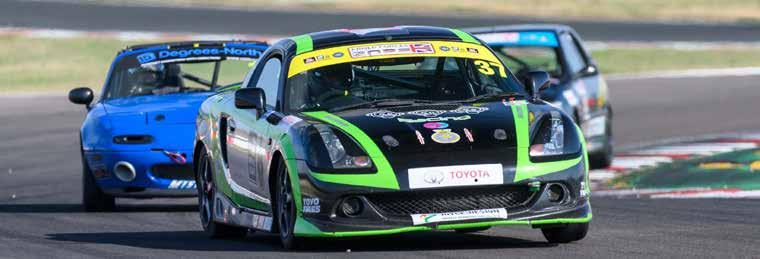
Further back Seb Unwin and novice Dan Blackett (both in matching BMW 116i cars) produced clean drives with Seb, in the newer team car, pulling away from similar RAF and Army run cars to finish 29th and ninth in class ahead of Dan in 32nd and 12th in class.

Further ahead Liam pulled away to finish 24th, 4th in class beating Gareth in 27th, 7th in class and Simon after a late trip through the gravel finished 28th and 8th in class.
Mike drove a fantastic race to win Class D and finish 16th overall. Ben McLaughlin (Renault Clio 172) continued a solid season finishing seventh in Class C and 17th overall. With a fine recovery drive from Keith resulting in a 12th place finish overall and 5th in Class C. At the front Mark drove a strong race to win Class B
and finish third overall.
With the grid for race two set by the second-fastest times from qualifying the grid was very similar to the earlier race with Keith once again looking to make up places from the rear of the grid. All drivers got away cleanly with Simon and Gareth battling hard through the Craner Curves on the opening lap.
At the head of the race Mark fought a race long battle with the quicker Class A cars for the race lead despite a power disadvantage on the long Exhibition Straight.
After 15 laps Mark had to settle for second overall, but easily winning his Class by over 25 seconds. Further back Keith once again sliced through the Class D cars on the opening lap to engage in a race long battle with a turbo-charged MX5 despite losing power in the closing stages due to a boost leak on his supercharger, eventually coming home 12th matching his result in race one and fifth in Class C.
Mike followed up his class win in race one by matching it in race two, finishing 14th overall well ahead of a number of more powerful cars.
Ben continued his strong form finishing
17th overall and ninth in Class C, extending his lead in the novice championship.
Liam once again showed the skills he has learnt from karting to bring the team’s Peugeot home in 22nd, fifth in Class D. Just behind Simon enjoyed a quiet race on his return to the team after an operationally enforced year out from the sport to bring his MX5 home in 23rd, sixth in class. Seb and Gareth battled race long with the two drivers running very close up the hill to the fast McLeans corner to finish 25th and 26th respectively, seventh and eighth in class. Further back Dan completed a clean race to finish 29th and 11th in class.
After two hard races the team left Donington Park in first position in the overall championship ahead of the Army and RAF.
The team will head next to Snetterton Circuit in Norfolk in October for the final two rounds of the season hoping to seal the inter-services AFRC win.
Anyone wishing to get involved either racing or supporting, should contact Lt Cdr Keith Attwood; carracing@ rnrmmsa.co.uk or for more details visit www.rnrmmsa.co.uk and www. armedforcesracechallenge.net

36 OCTOBER 2022: royalnavy.mod.uk/navynews
Lt Cdr Max Wilmot receives the trophy, and pictured in action
Breathtaking Bavaria
AN adventurous training centre set in the stunning scenery of Bavaria is now fully open to Royal Navy and Royal Marines personnel.



The Naval Outdoor Centre Germany (NOCG) is operating year-round activities once again after more than two years of disruptions due to the Covid-19 pandemic.
Initially opened as an adventurous training base for marines in 2004, the centre has since expanded and offers a range of sporting activities for 52 people a week, including family skiing over Christmas and Easter.

Its success and popularity has grown over the years and it has been a fulltime adventurous training centre since
2009, moving to its current home in 2014.
Sailors and Royal Marines took full advantage of the NOCG being fully open when they recently completed challenging and climbing in the mountains.
During the summer, it also offers kayaking on breath-taking lakes and rivers and mountain biking.

Then in winter, personnel can head to the slopes for skiing with beginner courses with instructors to courses for those wanting to improve their technique.
The centre gives personnel the chance to gain experience in the activities as well as foundation level
courses.
A sailor who visited the NOCG over summer said: “I wish to take this opportunity to thank NOCG for aiding and facilitating our Adventurous Training package.
“Everyone thoroughly enjoyed their experience, and it was evident that stronger bonds were forged between groups during the week.
“Sustaining a busy operational tempo is always challenging and as we are preparing for various deployments around the globe, opportunities such as NOCG, are of paramount importance in terms of looking after our people.”
Visit NOCG.co.uk to book for future courses.
37OCTOBER 2022 :royalnavy.mod.uk/navynews
Personnel enjoy summer visit to adventurous training centre
MEET the guardians of the gateways to the Middle East They don’t stop pirates. They don’t seize drugs.
Or caches of illegal arms. They’re not as well known or established as other task groups and headquarters which have been running for more than 20 years and can draw upon military power and personnel from more than three dozen nations.
They’re not even as well known in Royal Navy circles as the Naval hub of operations in Bahrain, the UK Maritime Component Command. But without the operations they run there’s the possibility two of the world’s key maritime choke points could be strangled, severely impacting global trade at a time the world can ill afford any such disruption.
The ships, helicopters, aircraft and above all personnel assigned to Operation Sentinel are the guardians of two ‘gateways’: the Strait of Hormuz at the entrance/ exit of the Gulf, through which approximately one sixth of global oil production and one third of the world’s liquefied natural gas passes every year; and the Bab el-Mandeb Strait at the foot of the Red Sea, through which approximately 17,000 merchant ships pass annually.
Operation Sentinel has only been running since November 2019, directed initially from tents – now permanent accommodation – inside the US Naval Support Activity at Bahrain, its goal is to deter statesponsored malign activity at sea and reassure the merchant shipping community in the Middle East region.

To date, nine nations have committed to Sentinel’s parent political body, the International Maritime Security Construct –Albania, Bahrain, Estonia, Lithuania, Romania, Saudi Arabia, UAE, the UK and the USA – with the Royal Navy leading the operational side of things since January 2020 for nine months at a time.
At present Commodore Don
Mackinnon (pictured inset with some of his staff) oversees things.
“This is an incredibly important mission for all of us. Working together every day alongside our partners, we aim to keep international trade flowing freely and uninterrupted at sea, allowing oil, natural gas, food and other essential commodities to arrive safely onto supermarket shelves, into petrol stations, and ultimately into homes every day across the UK and further afield,” he explained.
There is a strong Royal Navy presence among the multi-national staff, among them Senior Operations Officer (SOO) Lt Cdr Richard Osborn who coordinates the Sentinel watch floor and ensures the Group Warfare Officers (GWOs) are fully trained and prepared for their role.
He also has responsibility for maintaining the inventory of active maritime units, known as ‘Sentinels’ (major warships, such as HMS Montrose pictured below) and ‘Sentries’ (smaller warships/
patrol vessels), placed strategically throughout the region to provide a constant presence and deter unlawful, unsafe or unprofessional activities.
Lt Cdr Osborn and his GWOs make sure the Sentinels and Sentries maintain contact with the merchant vessel community with regular radio maritime safety calls – 10,000 a year – and by sharing maritime domain awareness information.
“Having had the opportunity to operate in this area throughout my career at sea, embedded with the Royal Navy of Oman and ashore with UKMCC, the additional challenges of operating in a coalition environment has been both enlightening and has highlighted that all navies operate in a similar fashion aiming to be ready to deal with any eventuality,” he said.
“The day to day work carried out by IMSC ensures that merchant vessels can be reassured and continue to ply their trade unhindered from potential threats

and the chance to work with different nations staff has been rewarding.”
Sentinel activity also requires a great deal of planning, carried out by a veteran staff officer Lt Cdr Craig Raeburn. His qualifications as a professional trainer and his background working with a multitude of members from the international community have allowed him to excel in this role.
He works with a planning and training team to develop ‘Sentinel Shield’, exercises which allow partner nations to better train at sea, resulting in improved bridge communications, ship handling and maneuvering, and better use of the newest technological advancements, most notably, unmanned or autonomous assets and artificial intelligence.
“In over 30 years I have been fortunate to work in several coalition staff roles from Bosnia to South Korea and have worked directly with navies in Canada and the Netherlands. Having recently rejoined the Navy from the reserves this is the first time that I have had the opportunity to work in this part of the world,” Craig said. “Unsurprisingly the challenges remain the same with communications and culture, but is a privilege to experience new environments as part of a collation team.”
Bringing together current and future operations, with wider information activities and media engagement, the Joint Effects team, headed up by Lt Cdr Mark Rose is responsible for coordinating strategy and providing a framework to integrate priorities and align the strategic efforts directed by the commander.
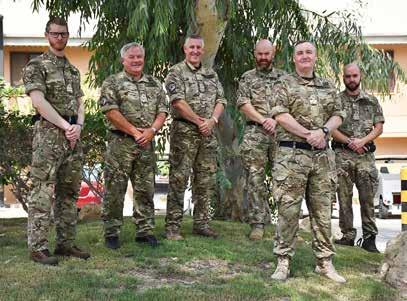
With a background in intelligence and, more recently, as a Qualified Helicopter Instructor, Lt Cdr Rose ensures IMSC messaging is communicated to all its key audiences, both allied and adversary.
He works directly with Lt Dan Chandos-Hall who has one of the busiest roles on the staff: communicating with existing partner nations and potential partners to highlight the benefits of IMSC membership as they seek to grow the coalition.
Keeping the wheels turning internally, Lt Adam King is Cdre Mackinnon’s military assistant, helping him stay on top of a busy daily schedule and multiple engagements and activities – not just in his headquarters or on the US/UK Base, but also in downtown Manama (Bahrain’s capital), or travelling abroad when needed, making sure no detail is overlooked or forgotten. Completing the UK presence are three RN ratings in key roles. CPO Chris McCoy and CPO Emma Swinton both act as Group Watch Officers whilst LS Dale Langton-Jones is a Maritime Trade Operator (MTO) on the watch floor.
For Cdre Mackinnon one key message to underline is that maintaining security in the Gulf region goes on daily at a time when much of the world’s military and political attention is focused on Ukraine.
“It is easy to forget how important this part of the world is for all of us,” he added.
“Europe and the Middle East look far apart on a map, but remain utterly interconnected in terms of geo-politics, economics and trade – whether it is grain going from Ukraine into Yemen or Africa, or liquefied natural gas passing the other way from the Gulf to Europe to help address shortfalls in domestic gas supplies for example, all rely upon the unhindered free flow of international maritime trade.
“I am incredibly proud therefore of my team, contributing every day to that vitally-important mission.”
THE Golden gatekeepers
WALL SHIELDS OF ROYAL NAVY SHIPS

Hand painted on
given for
given for
TO
base
The Royal Alfred Seafarers’ Society

(minimum
Specialist experience over 100 years C.H. MUNDAY LTD
Rosemary Cottage, Churt Road, Headley, Bordon, Hants GU35
Telephone: 01428
email: enquiries@chmunday.co.uk www.chmunday.co.uk
Providing the highest standards of residential, nursing, dementia and respite care, including sheltered housing for independent living, for former seafarers and their dependents. Set in a 14 acre estate, our Surrey based care home provides like-minded companionship and support for seafarers and a safe haven for those in old age.
IF YOU KNOW SOMEONE WHO NEEDS OUR HELP, PLEASE CONTACT US T- 01737 360 106 E- admin@royalalfred.org.uk www.royalalfredseafarers.com

38 OCTOBER 2022: royalnavy.mod.uk/navynews
wooden
6” x 7” £65.60 including UK postage and packing REDUCED PRICES
orders of 3 or more SPECIAL PRICES
10, 25, 50 and 100 CRESTED TIES
YOUR OWN SPECIAL DESIGN
50)
8SS
714971
Reference code: NAVY
Matthew (Matt) Waterman, WE. Joined RN at HMS Raleigh in September 2002 and served in HMS Invincible and Montrose before passing out from BRNC and joining HMS Iron Duke. Left RN in 2015 to work for BAE and then Irvings Shipbuilding in Halifax, Canada. Died August 16 in Grand Lake, Nova Scotia, aged 36.
Thomas Bisset Taylor Pirie, CPO Electrician. Served from January 1945 to July 1968 aboard HMS St George, Ganges, Newfoundland, Polaris,Artemis, Collingwood, Dolphin, Tireless, Adamant, Terror, Sultan, and Aeneas. Died May 31, aged 93.
Horace (Roy) Webb, CPO Mech1. Served from 1956 to 1980 at HMS Ganges, Raleigh, Malcolm, Gambia, Striker, Sultan, Eagle, Berryhead, Singapore Fleet Maintenance Unit; Portland Fleet Maintenance Unit; Blake, Diego Garcia, Sultan.
John Henry Yates, LTO. Joined as part of HMS Ganges Class of 1945 and served in HMS Illustrious, Flint Castle, Chivalrous, Comet, SM Service –Sturdy, Scythian, Aurochs and then in the Royal Australian
Reunions
HMS Phoebe Association: We are holding a commemorative service to mark the 80th anniversary of the torpedo attack off Pointe Noire, Congo, on October 23. Form up in Bournemouth memorial gardens at the HMS Phoebe Memorial stone for 11.30am. Further details from Bob Hobbs, 01983 864508/079250746 or email Robert.hobbs1949@ sky.com
Royal Navy Photography Branch: Reunion planned for Friday November 4 to Monday November 7 at the

Ask Jack
Zara Osman: I am trying to find my biological father who was in the RN and met my mum Zara in Singapore in late 1986. I am now 34 and have been told that I look a lot like him, pictured right.

Elly Lloyd elleyescosmetic@gmail.com +6427 953 8682
HMS Pembroke: I am trying to track down my old shipmates from the Writers training class in 1965. I have found a few but would like to contact as many as possible.
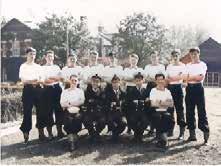
The picture, far right, shows: back row, from left, Colin Jones (deceased), Malcolm Hughes, David Parry, Colin Chrichton, me, David Steele, Peter Butler, Len Bamber, and Peter Devaney.
Front row, from left, Ken Smith, Brian Rowland, Cliff Ball, Peter Denham/Denholm, and Clive Berry.
Tom Smith dismith8@btconnect.com
HMS Plym: I would like to trace the River-class frigate’s unofficial timber crest. She left Devonport reserve in 1951/2 and deployed on Operation Hurricane in the Monte Bello Islands of Western Australia, where she was destroyed in the UK’s first nuclear weapon test. The ship was stripped beforehand and I have discovered an auction house sold a badge said to be from the frigate (K271) in 2007 but I believe it to be unofficial, something confirmed to me by Chatham Dockyard Historical Society. I would like to hear from anyone who can help me track the crest down.
Geoff Robinson 7 Mountfield, Borough Green, Sevenoaks, Kent TN15 8HX
Navy in Telemachus. Died September 1.
Capt Harold R C Young. HMS Orion, Weapons Dept (Naval), Chief Polaris Executive Bath, Director General Ships. Died August 10, aged 100.
Cdr Michael D Y Phillips. HMS Ganges, Woolaston, Cochrane, Reclaim, St Angelo, Neptune, Wakeful. C-in-C Fleet. Died July, aged 89.
Cdr James D O Macdonald. 893 899 764 767 NAS. HMS Centaur, Hermes, Victorious, Ark Royal, Eagle. Died September 4, aged 81.
Surg Cdr John S S Mowat. HMS Kent, Pembroke, Royal Arthur, Sultan, Daedalus. INM Gosport. RM Poole. CTCRM. Died August 27, aged 92.
Lt Michael J Ryan. HMS Newcastle, Grafton. 890 and 766 NAS. Died August 18, aged 87.
Lt RNVR K W Atkinson. 759 853 and 792 NAS.
HMS Argus. Died August 20, aged 100.
Lt Cdr Christopher C Coote. 826 845 NAS. FOF3. DGA(N). HMS Daedalus. Died aged 76.
CPO Michael Allinson Johnson. Served on HMS Indefatigable, Agincourt, Saintes, LLandaff,
Royal Beach Hotel, Southsea. All former and serving phots, plus partners, welcome to mark the 103rd anniversary of the branch formation. Contact Danny du Feu. ddf.photography@gmail. com; Tel: 07711 083465.
BENBOW 41: A reunion of the class from HMS Raleigh in October 1982 is planned. Please contact Glenn Gowling on ggowling37@gmail.com or call 07581 468527
Alert, Ausonia, Venus, Galatea, Yarmouth, Salisbury,Achilles, Ganges, Victory, Dryad, Cochrane, Drake, Osprey, Pembrooke, Mercury. Died August 31, aged 84.
CPO Anthony Attwater Wheeler, aka Spike (RN CD1). Served from 1947-1975 on many vessels, including HMS Duke of York, Mull of Kintyre, Victory, Mauritius, Kenya, Bulwark, Reclaim, Shoulton, Lochinvar, Triumph, Hubberston, Osprey and Tamar. Served in Suez in 1956, and loved his work as a clearance diver. Leaving the navy, he pursued a management career in commercial diving. Died September 11, aged 91.
Leading Stoker Tony Edge. Chairman of HMS Tenby Association F65-J34. Died September 11.
Association of Royal Navy Officers and RNOC
Lt Cdr Douglas A Barlow. HMS Monkton, Dryad, Ganges, Fearless, Vernon, Wilton, Fife. SCC. Died July 29, aged 93.
HMS Ganges: A 60th anniversary celebration is planned for 54 Recruitment November 1962 Hawke 291 and 292 classes at Chatham in November. Any old boys who are interested please contact Robin Potter at r.potter60@talktalk.net
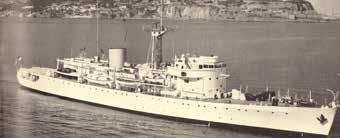
HMS Bulwark, Albion & Centaur Association: The 2023 reunion is confirmed at the Queen’s Hotel, Southsea, from May 12 to 15. Contact Secretary Denis Askham at 07773651213 or email askhamd3@gmail.com
THE mystery ship in the August edition of Navy News (right) was the Tonclass cruiser HMS Liverpool. She won her second battle honour at Calabria (Punto Stilo).
T Dunne, from Essex, wins £50 for sending us the correct answers.
This month’s mystery ship (above) is a survey ship built at Chatham and the first small ship designed to carry a helicopter.
1. What was her name and
2. Which granite islet did her crew claim for the UK?
Please complete the coupon and send it to Mystery Picture, Navy News, Navy Command, Leach Building, HMS Excellent, Portsmouth PO2 8BY.
We will also accept emailed entries to subs@royalnavymail.mod.uk with
October Mystery Ship in the header. Coupons and emails giving the correct answers will go into a prize draw to establish a winner. Entries must be received by November 12. More than one entry can be submitted but photocopies cannot be accepted. Do not include anything else in your envelope: no correspondence can be entered into and no entry returned.The winner will be announced in our December edition.
Priscillabreakspear0@gmail.com
FRADU: I would like to contact the following former Fleet Requirements and Air Direction Unit Hunter pilots who mounted detachments at RAF Gibraltar from 1980 to 1983: Tommy Thompson, Godfrey Underwood, Simon Willoughby and Derek Morter. Tony Fairburn, Sqn Ldr (Rtd) tony.fairbairn@btinternet.com
STEAD: Colleagues and friends of the late Lt Edward Keith Stead RCNC are asked to please contact his sister Isobel.
Isobel Stead
isobelstead@gmail.com
Johnny Craig: We are trying to contact Johnny for our 40th secondary school reunion. We know he joined the Royal Navy and served in submarines. He left St Columba’s College in Dublin in 1982, aged around 18.
William Simpson Whpsimpson@gmail.com
Peter Pawsey: Geoff Cummings RN (Rtd) is trying to contact Peter, who served in HM Submarines. Gcummings10@outlook.com
HMS Kent. My father Ronald Tinsley served aboard the WW2 cruiser, I believe in 1941-1942, during the Arctic Convoys to Murmansk and the attack on Tirpitz. He said very little about his experiences so would love to hear from anyone who had a father or grandfather aboard who may have known him.
David Tinsley david2tinsley@btinternet.com
RN chef through to final of national competition
A TALENTED Royal Navy chef has taken one of ten spots in the final of a national culinary competition.
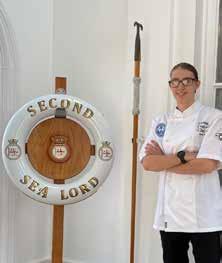
Chef Nicole Watt impressed the judging panel with her mouth-watering semi-final dishes to make it to the Craft Guild of Chef’s Young National Chef of the Year.
She will prepare a three-course meal at the event at Le Cordon Bleu culinary school in London this month.
“To make it through to the final is an amazing achievement,” said Nicole.
“I’m very excited to be cooking my dishes for the panel of judges and looking forward to what the other competitors have come up with for this great brief that has been set for us. To have made it through to the final, representing the Royal Navy makes me very proud.”
Nicole joined the Royal Navy in October last year and is currently employed at Admiralty House in Portsmouth.
For the final, she will need to create an egg starter which includes at least three of the following; pumpkin, root vegetables, watercress, beans, pulses, cereals or grains.
For the main course, she will need to cook a Provencal inspired dish using Norwegian haddock or cod fillet.
And finally for dessert, serve up a modern interpretation of a classic puff pastry dessert using a homemade puff pastry.
The Fleet Caterer, WO1 Carl Neville, added: “We have extraordinary talent in the RN Catering Services branch, serving up to four meals a day to hungry sailors and marines at sea, under the sea
and in the field.
“They also showcase their culinary talents in delivering the wow factor both front and back of house in support of high-end Defence Engagement activity across the globe.
“What our people do is truly exceptional. Chef Watt is testament to this; when you see the list of world class dining establishments her competition peers are coming from, you realise just how good
Royal Navy chefs really are.
“She told me she can’t wait to join her first ship HMS Defender early next year and loves being part of a team, catering at scale just as much as she loves to produce refined plates.
“We all wish her the best of luck in the final. Well done, Chef!”
Nicole impressed judges in the semi-final with this three-course jaw-dropper: n A first course of watercress chawanmushi with a mild curried granola, soused shimeji mushrooms, broad beans dressed in a broad bean oil, red amaranth and micro coriander.
n A main course of line-caught Norwegian cod fillet, saute spinach with garlic and fennel, compressed cherry tomatoes, a julienne of pickled fennel and shallot, smoked cod beurre blanc split with a roasted red pepper oil, seaweed brittle and garnished with salty fingers, micro pea and fennel frongs.
n A dessert of a classic tarte tatin with a filling of pear and fig with rich caramel, fig and balsamic puree, white chocolate soil, served with a gorgonzola ice cream garnished with apple blossom.
The Young National Chef of the Year competition launched in 2012 and represents the most talented pool of young chefs in the UK, taking in winners of regional and national competitions across the UK. Only the best, most innovative, and creative chefs get a shot at the title, providing chefs with an exciting opportunity to put themselves in the spotlight and show their culinary talent to the wider hospitality industry.
NOTICEBOARD ENTRIES
n Notices for this page should be brief, clearly written or typed and addressed to –The Editor, Navy News, Navy Command, Leach Building, HMS Excellent, Portsmouth PO2 8BY, or email: news@royalnavymail.mod.uk or editor@royalnavymail.mod.uk
n If you are sending your notice via email, please include your full address and telephone number.
n Reunions appear in date order, and requests to place an entry in a particular edition cannot be guaranteed.
nPlease send in reunions at least two months (preferably three) before the month of the event. There may be a delay before items appear, due to the volume of requests.
n Entries are free to non-commercial organisations. Items pertaining to commercial work, books and publications for profit can only appear as paid-for advertising.
n The Editor reserves the right to edit or refuse publication of submitted notices.
Navy Command, Leach Building, HMS Excellent, Portsmouth PO2 8BY
Editorial News@royalnavymail.mod.uk
Richard.Hargreaves@royalnavymail. mod.uk
Peter.Howard@royalnavymail.mod.uk
Elisha.Quade@royalnavymail.mod.uk
Reprographics Andrew.Brady150@mod.gov.uk
General enquiries news@royalnavymail.mod.uk
The
Business Business manager: Lisa Taw bm@royalnavymail.mod.uk
Admin assistant: Mistrala.Harries@royalnavymail. mod.uk
Subscriptions and advertising: subs@royalnavymail.mod.uk www.royalnavy.mod.uk/navynews Telephone 07773 155321
© Crown copyright
This
Where
Navy
To
Or
the
Published
Policy Team, The National Archives, Kew, London TW9 4DU, Or email: psi@nationalarchives.gsi.gov.uk.
you will need to
and
Navy Command HQ,
Talking Navy News
by
Contact 07770 088388
A speaker that will
this can be obtained from the Talking News, or the file can be played back through a computer.
Submissions for the Deaths,
Jack
in
39OCTOBER 2022 :royalnavy.mod.uk/navynews Deaths NOTICEBOARD
Reunions and Ask
columns
September’s Noticeboard must be received by OCTOBER 14 2022
News is available free of charge as a digital file on memory stick or email from Portsmouth Area Talking News for those with difficulty reading normal type.
and leave a message, or email studio@patn.org.uk
take a USB plug is required but
OCT 2022 No. 819: Founded 1954
views expressed in this paper do not necessarily reflect the views of the MOD
publication is licensed under the terms of the Open Government Licence v3.0 except where otherwise stated.
view this licence, visit nationalarchives.gov.uk/doc/open-government-licence/version/3
write to
Information
we have identified any third party copyright information
obtain permission from the copyright holders concerned.
by Navy News,
Portsmouth
printed
Walstead UK. MYSTERY PICTURE 332 Name Address My answers: (1) (2) Editor: Lorraine Proudlock Email: news@royalnavymail.mod.uk
David McIntyre. I am trying to find details about my birth father, who joined the Royal Navy in 1939 and lived in Southsea. He died in 1976. Priscilla Breakspear.
AWARD supplies replica replacement medals licensed by the MoD and provide a comprehensive cleaning and medal mounting and engraving service to MoD standards by our highly skilled in-house team. We have over 35 years experience in medal services and offer a comprehensive range of personalised clothing, blazer buttons, berets, blazer badges,lapel badges, ties plus many more personalised gifts. For details of available full-size and miniature medals and related items contact: AWARD (Dept. NN24), PO Box 300, Shrewsbury, SY5 6WP, UK. Telephone: 01952 510053 Monday - Friday 9 to 5.00 Email: info@awardmedals.com or visit:
PREPARE FOR PARADE
SCAN ME

VETERANS DISCOUNT*
To claim 10% medal mounting discount please quote code NN24 when ordering by post, over the telephone or at checkout online. *Offer valid until 30th November 2022

Proud supporters of Veteran Groups and Service Charities for over 35 years.









 CLOCKWISE FROM TOP: Flagship HMS Queen Elizabeth fires the Death Gun Salute during her crossing of the Atlantic; HMS Northumberland fires off her own gun salute; The Queen’s Frigate, HMS Lancaster, marks the death of Her Majesty; Sailors in HMS Queen Elizabeth during a moment of reflection; a sailor from HMS Albion takes a moment during the amphibious flagship’s gun salute
CLOCKWISE FROM TOP: Flagship HMS Queen Elizabeth fires the Death Gun Salute during her crossing of the Atlantic; HMS Northumberland fires off her own gun salute; The Queen’s Frigate, HMS Lancaster, marks the death of Her Majesty; Sailors in HMS Queen Elizabeth during a moment of reflection; a sailor from HMS Albion takes a moment during the amphibious flagship’s gun salute





























































































































































































































